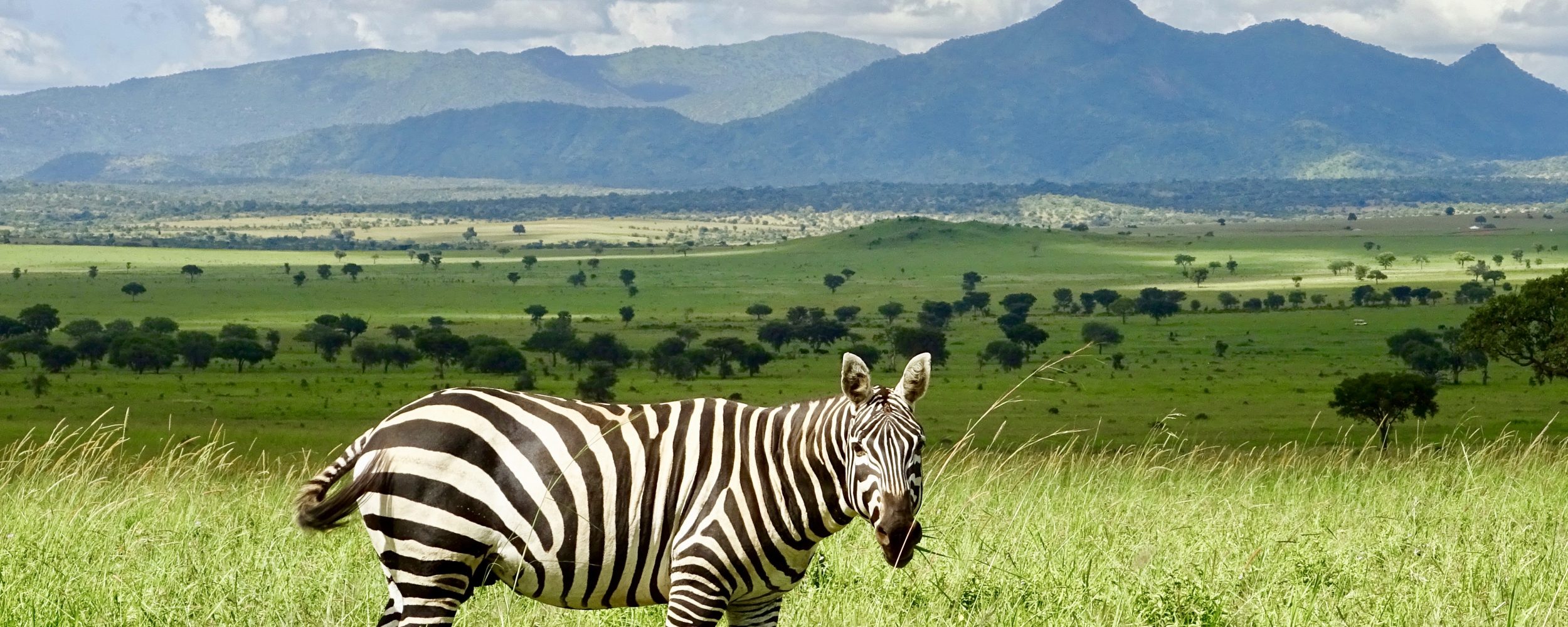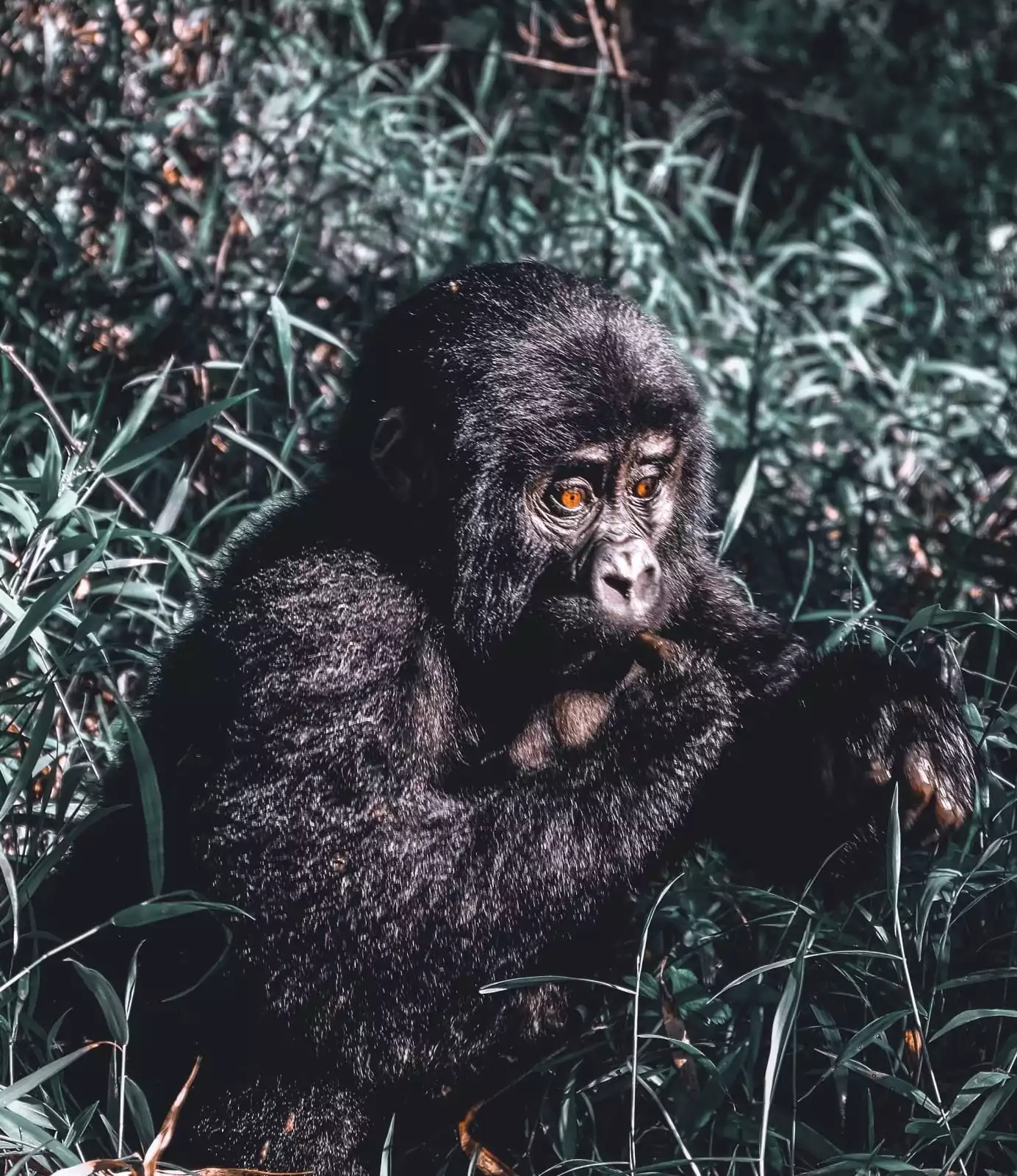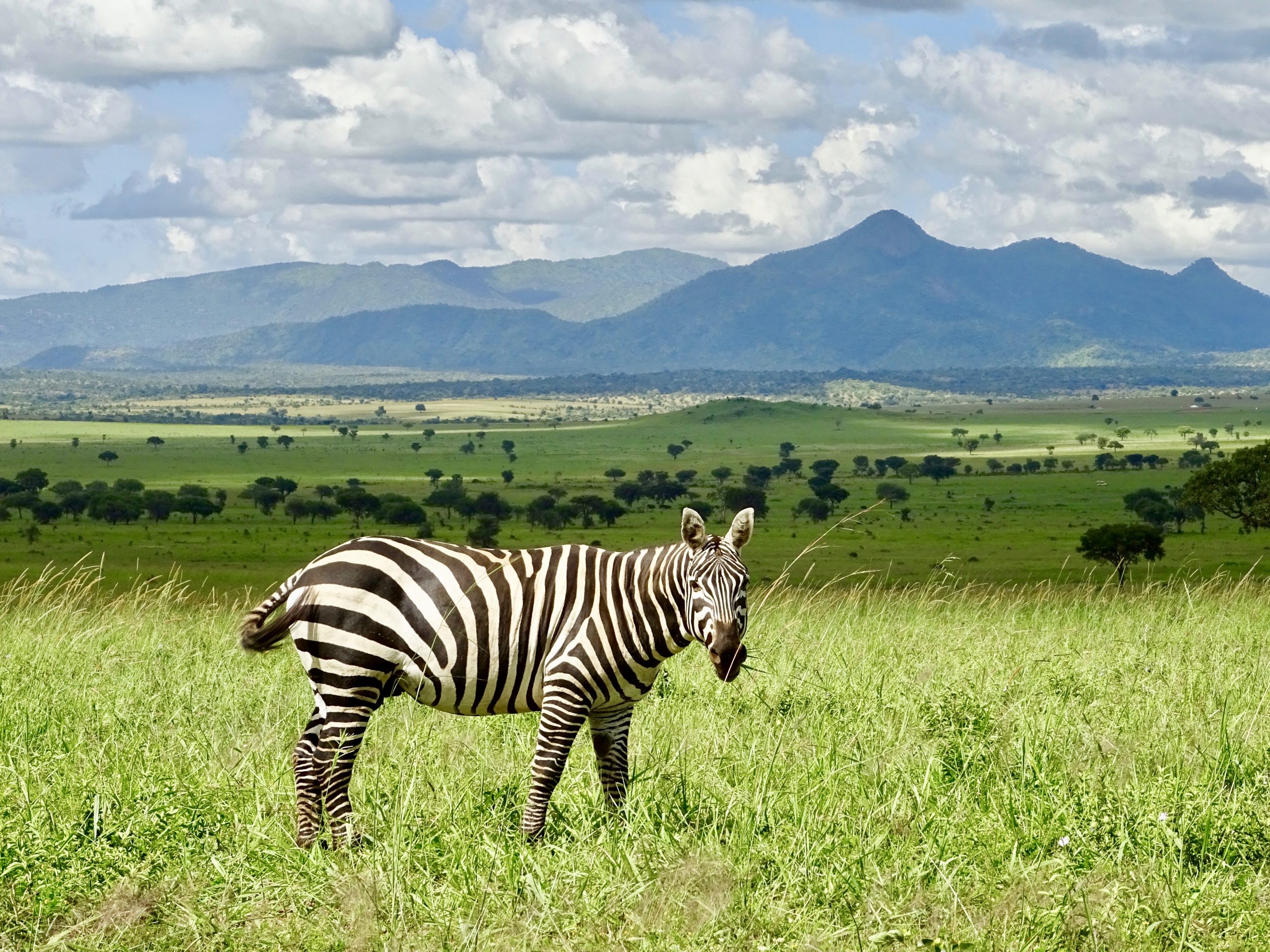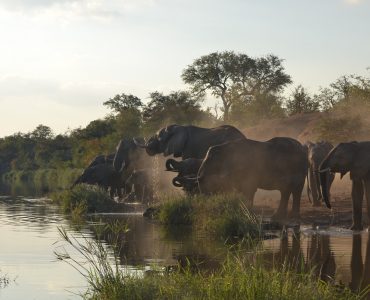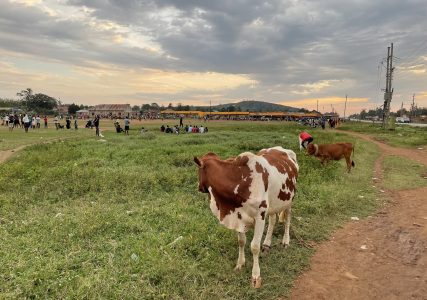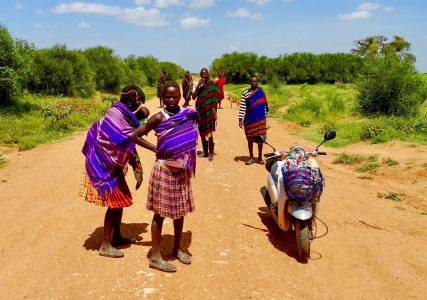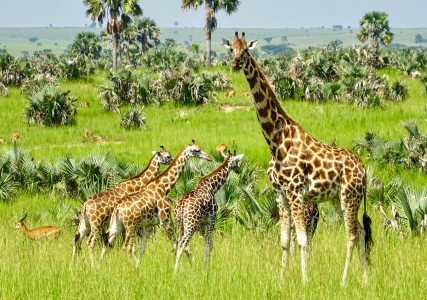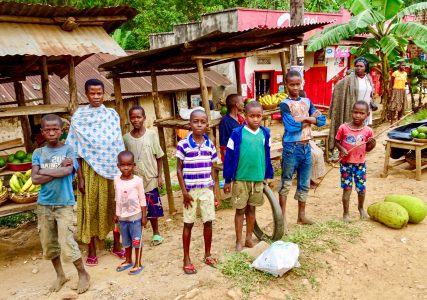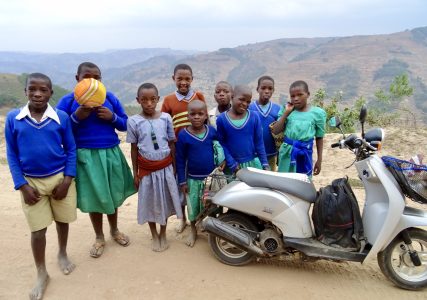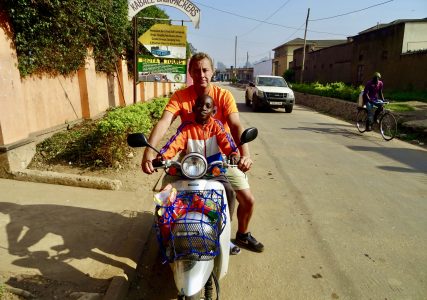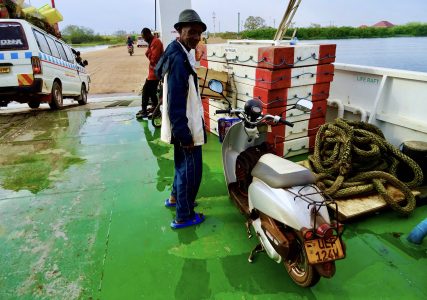Who dares to drive more than 3.000 kilometers on a scooter through East Africa? Visiting mountain gorillas? Scooter safaris (does this word exist?) in five National parks† To admire lions, buffaloes, hippos and elephants up close, among other things. My name is Eric and I like to travel around on a scooter. Read here part 14 of the unique report of an amazing scooter adventure Uganda, Rwanda en Kenya. In this part I travel almost 150 km from Kitgum to Kidepo Valley National Park on the border with South Sudan. This is a chronological report based on 25 beautiful photos.
Uganda has stolen our hearts more than once and as far as we are concerned it is a travel destination that belongs on the bucket list of every world traveler. Find out why Uganda is called the pearl of Africa.
A trip through Uganda will be one you will never forget. Spot the tree-climbing lions, meet thousands of elephants, come face to face with Mountain Gorillas in the jungle and get to know the beautiful culture.
From Kitgum to Gwere (30 km)
Just outside Kitgum I notice that another project is underway. This time it concerns maintenance on the road to Orom. Incidentally, I will drive the more than 140 km to the national park on a reasonably to well-maintained murram road (red clay sand).
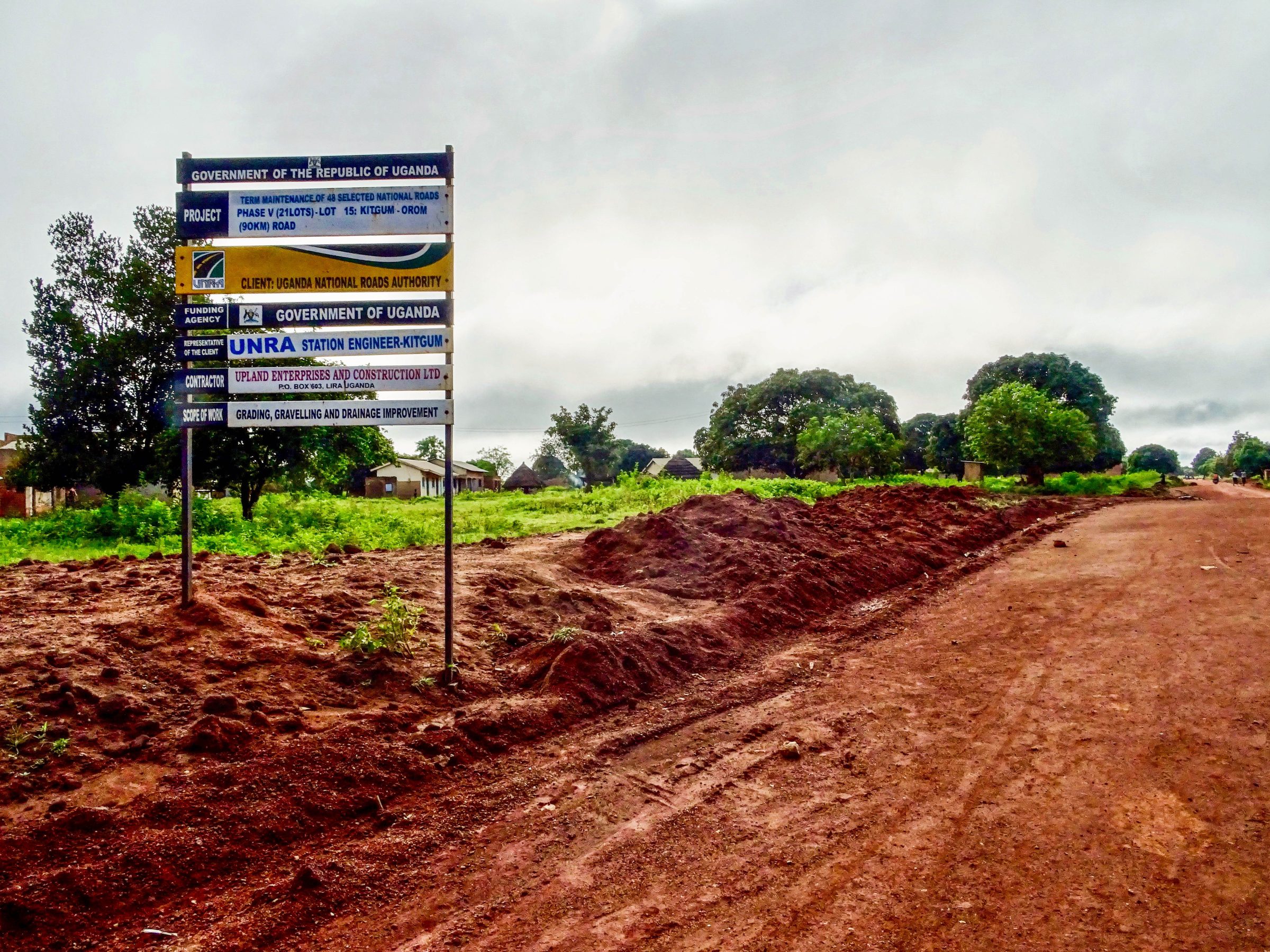
By eleven o'clock I have covered 30 km. Time for a stop in Gwere. I buy a few oliebollen from a saleswoman along the road. I treat the children to a delicious tomtom (Swahili for lollipop).
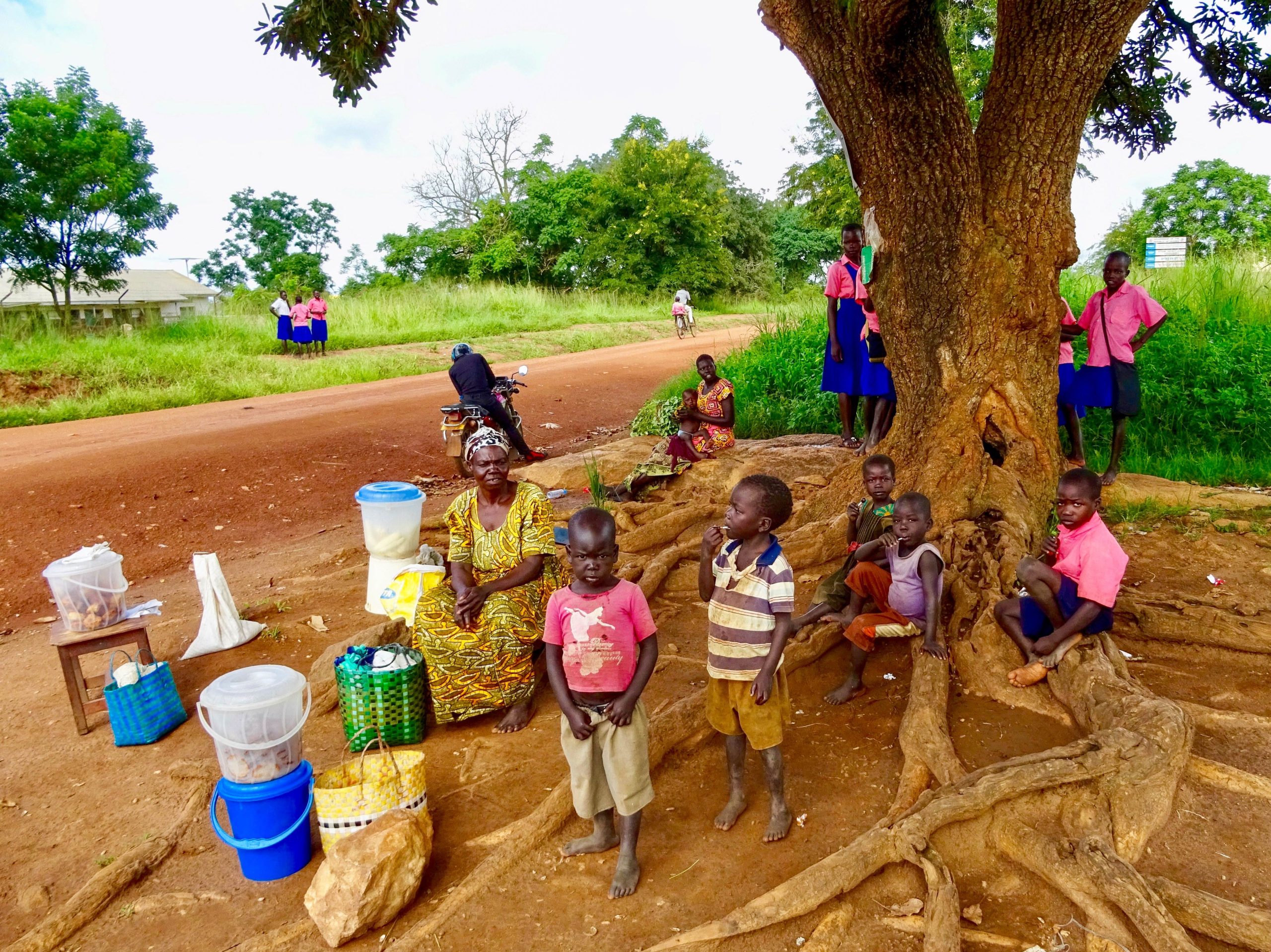
Just outside Gwere I can already clearly see the contours of the Morungole Mountains in the distance. The mountain range is located in the south of Kidepo and reaches up to 2.750 meters.
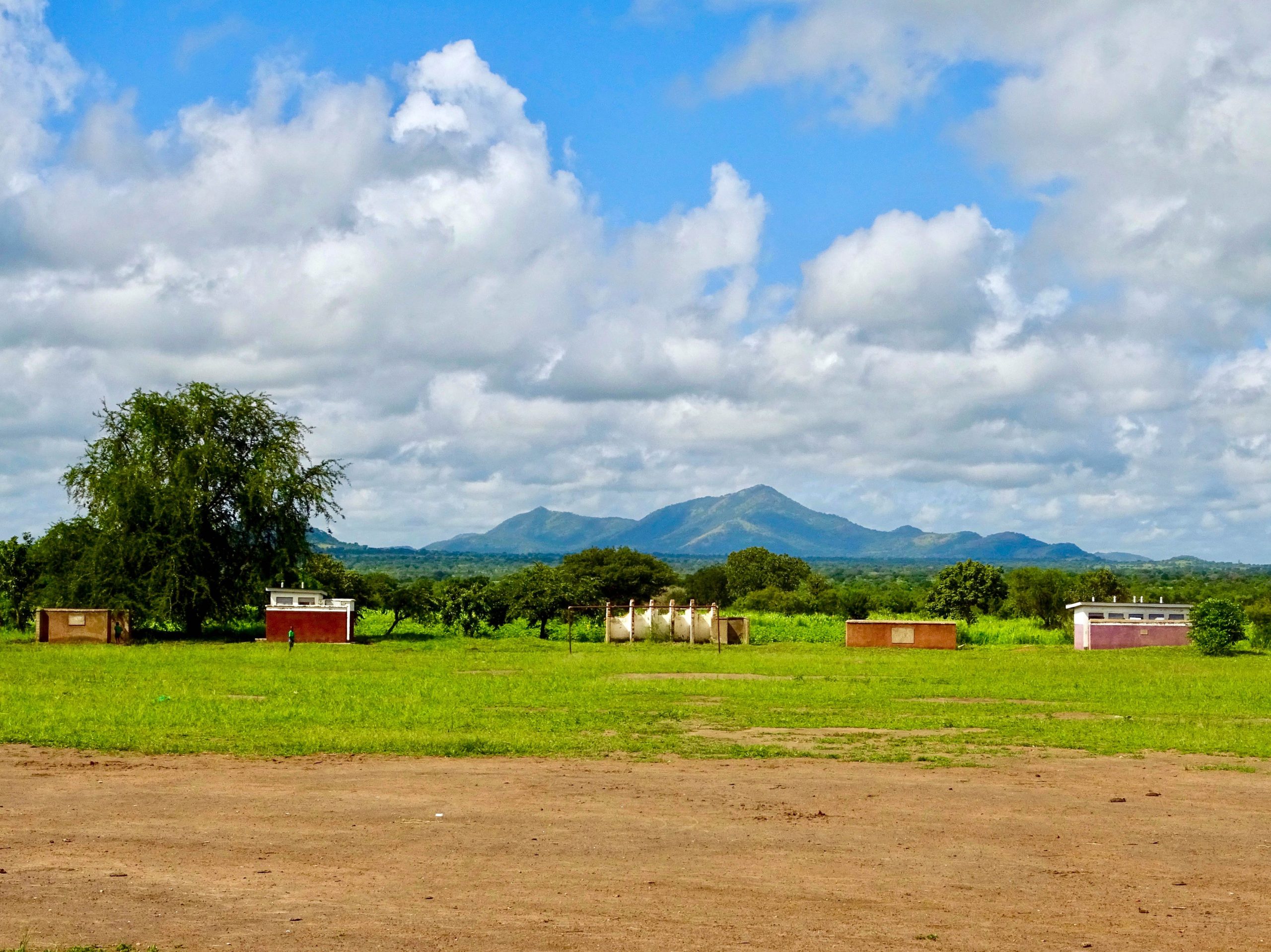
There is no getting lost today, because the mountains are my compass. In the fertile landscape I regularly discover huts where the residents are busy with their garden. Equally beautiful are the miles of fields full of sunflowers.
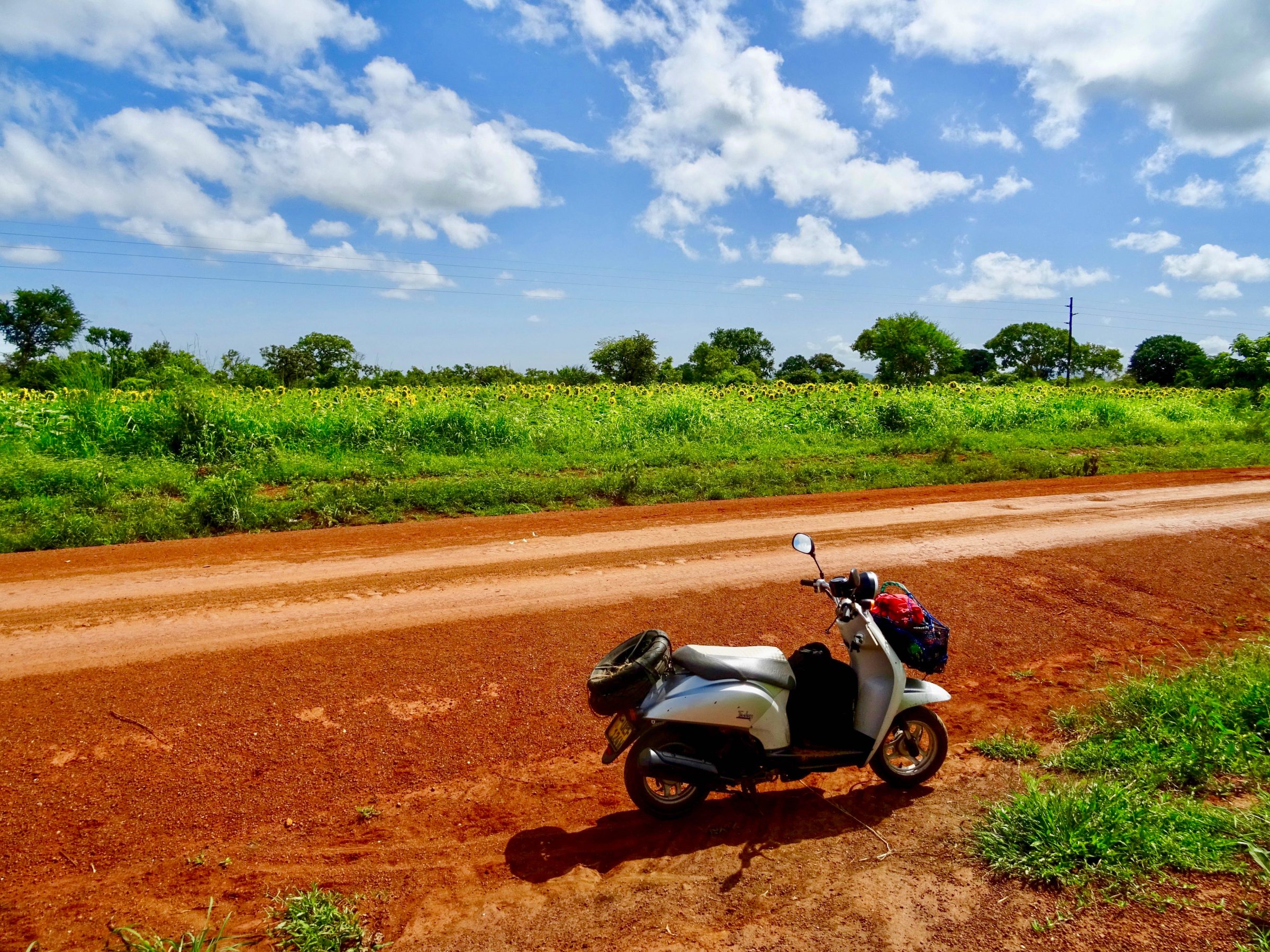
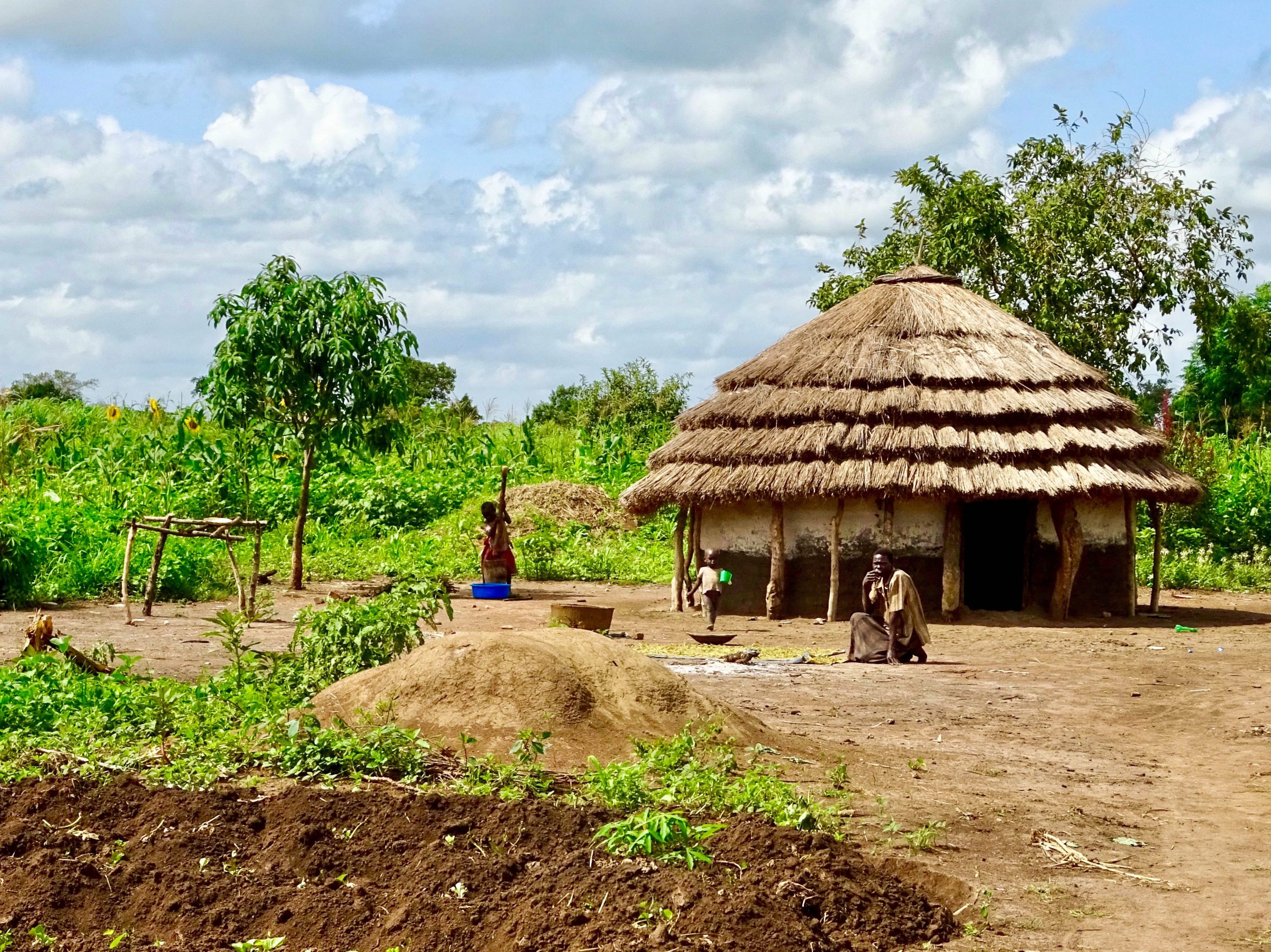
Kidepo is very isolated. Tourists traveling to the national park almost all take this tiring route. The alternative is even more exhausting. That route leads through the land of the Karamojong. Many roads there are hardly maintained. Of course you can also charter a plane in Kampala. There is a landing strip in the park.

From Gwere to Namokoro (34 km)
I arrived in Namokoro around one o'clock. Kidepo is now 81 kilometers away.
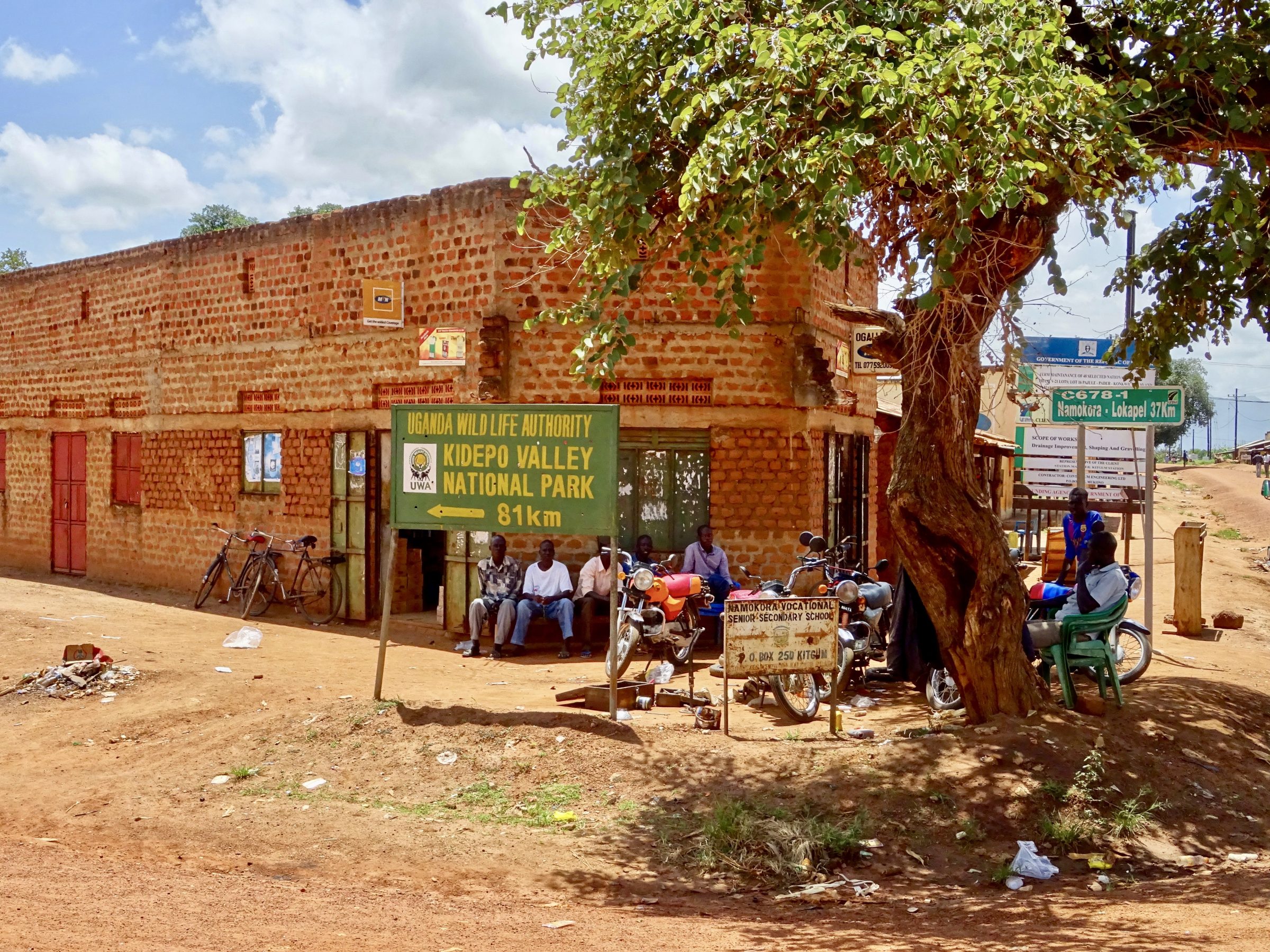
It's time to stretch your legs again and meet the eyes of all those astonished villagers. In the center the young men who serve as boda boda drivers sit on a bench in the shade. A little one of a few years crosses the road with a bottle of water on her head.
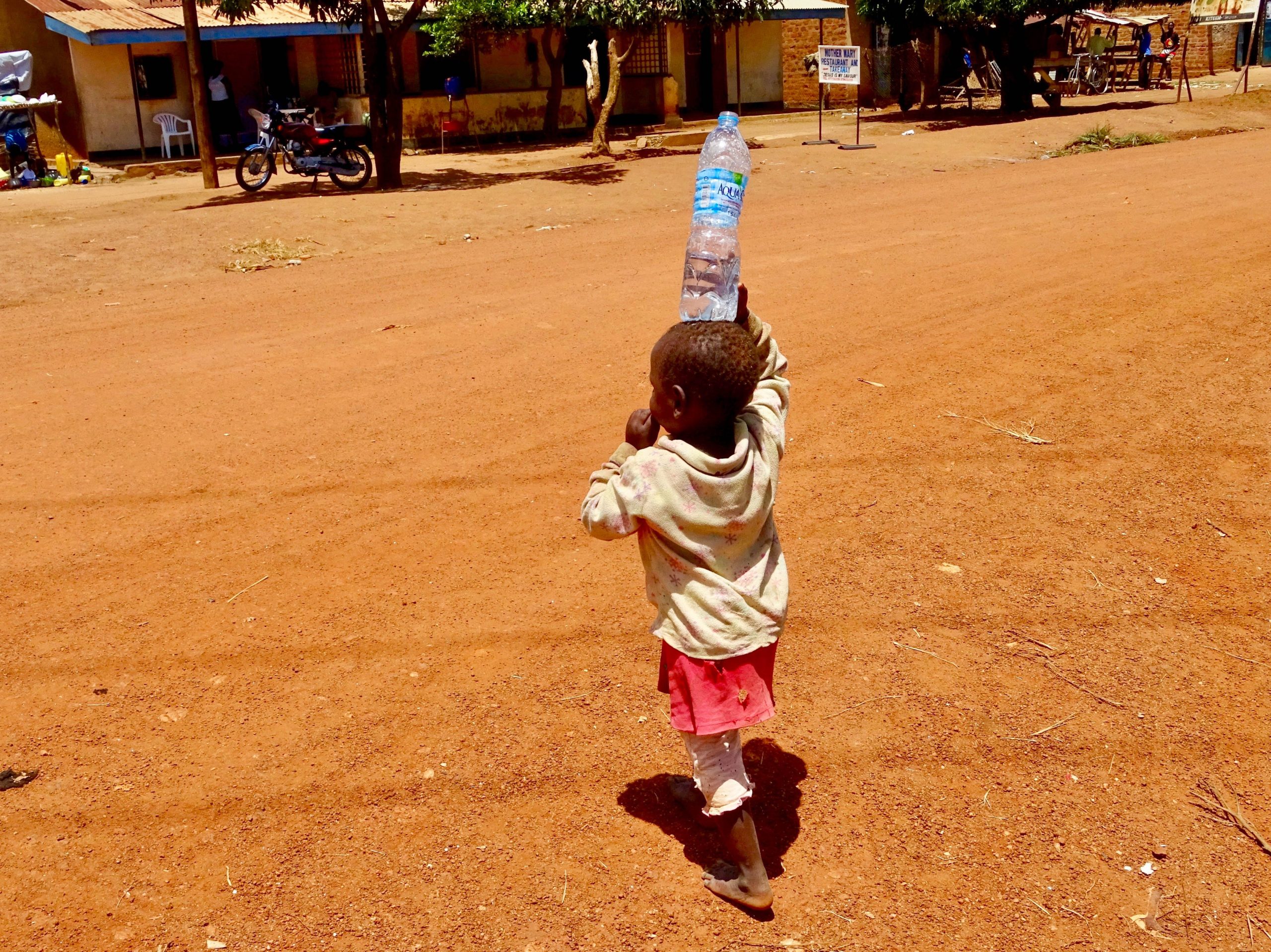
Further in the village a number of children pose at the water pump. In the background the traditional Acholi huts are visible.
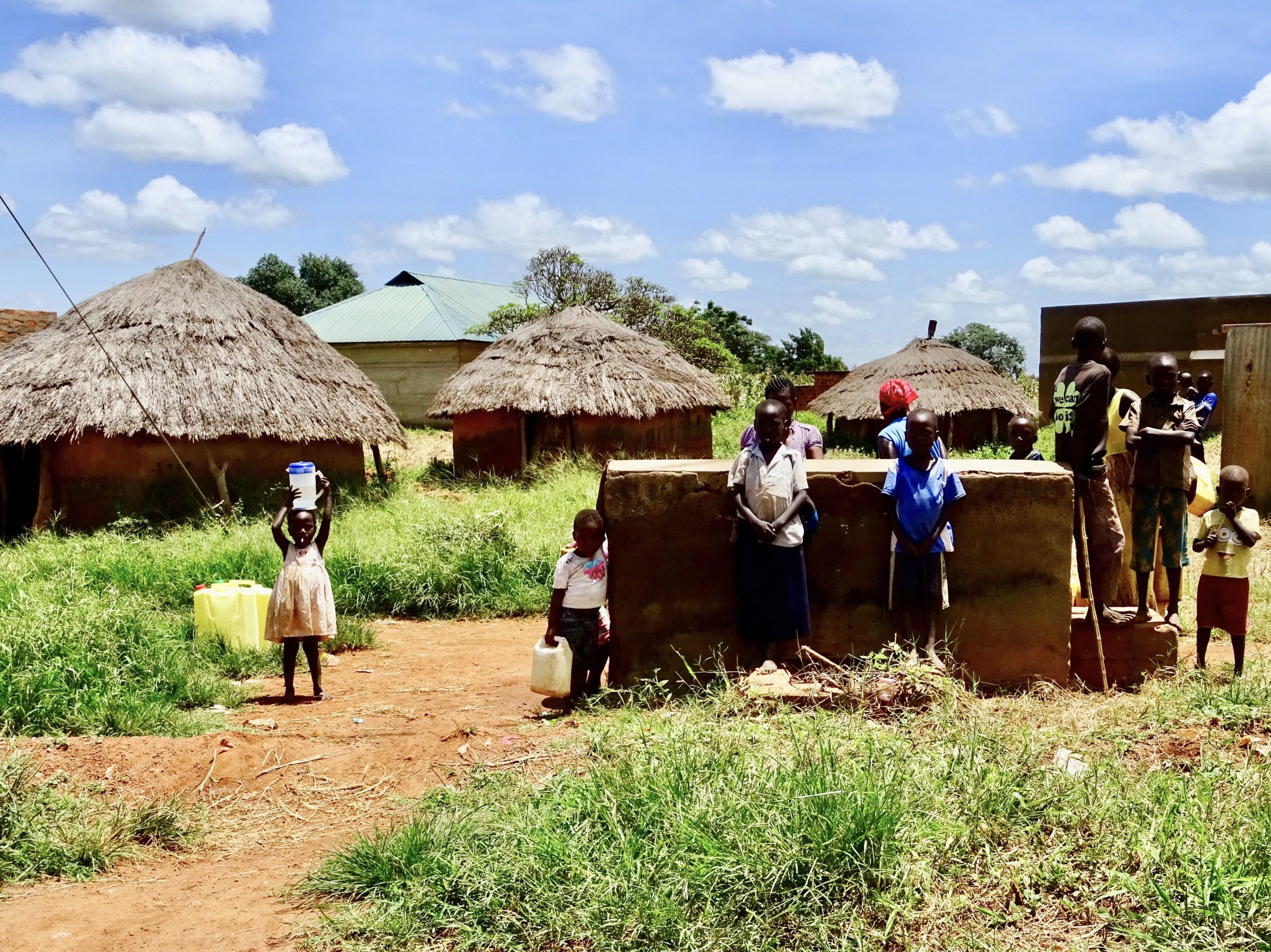
Around two o'clock it looks like the remaining 70 km to Kidepo Valley National Park can be covered in a straight line.
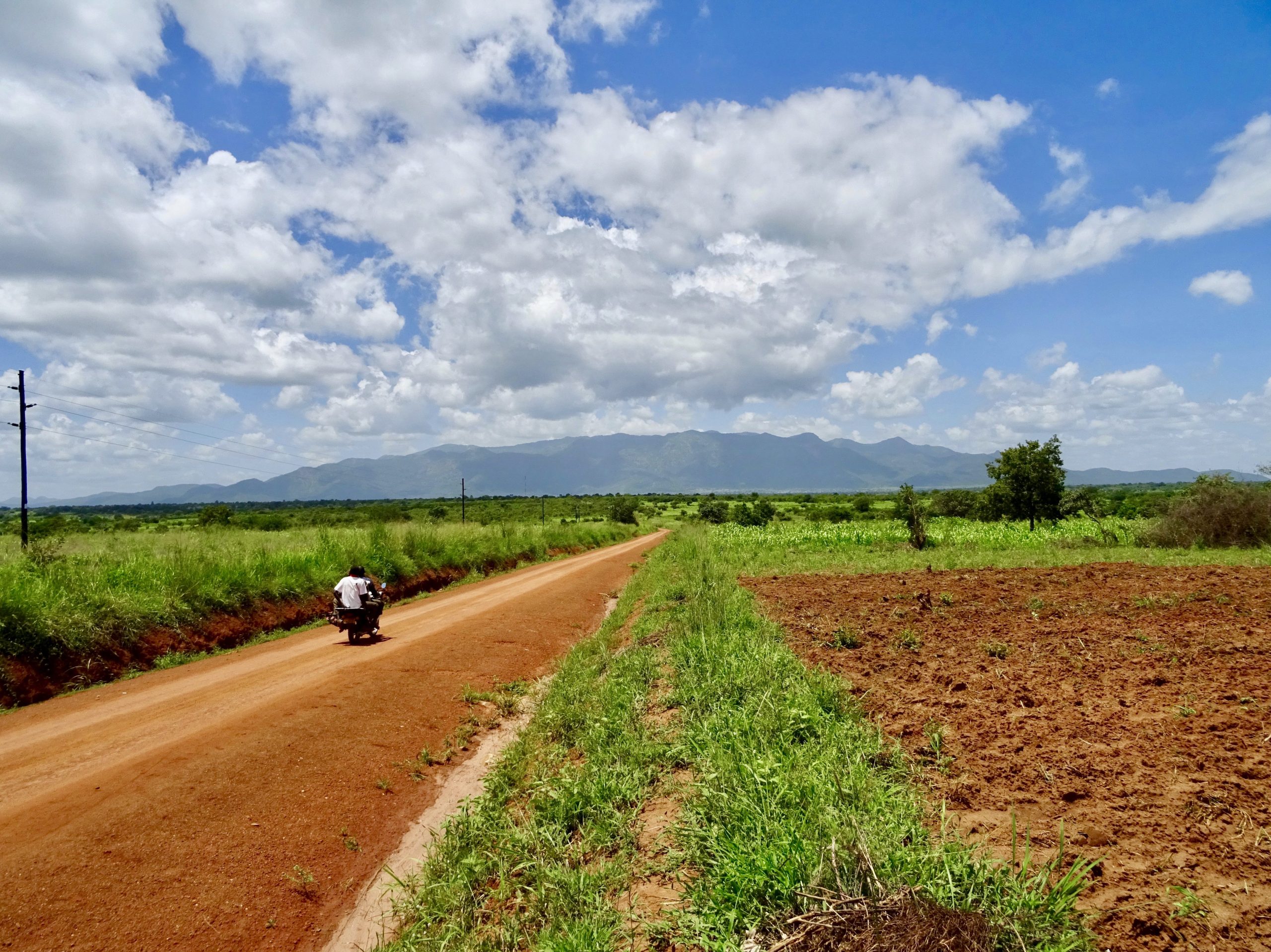
The road continues to be good. I reached Orom at half past two. There I have my tank filled with petrol. As is customary in these regions, the petrol is poured into the tank from a Coca Cola bottle. After four liters I can go again for more than 60 km.
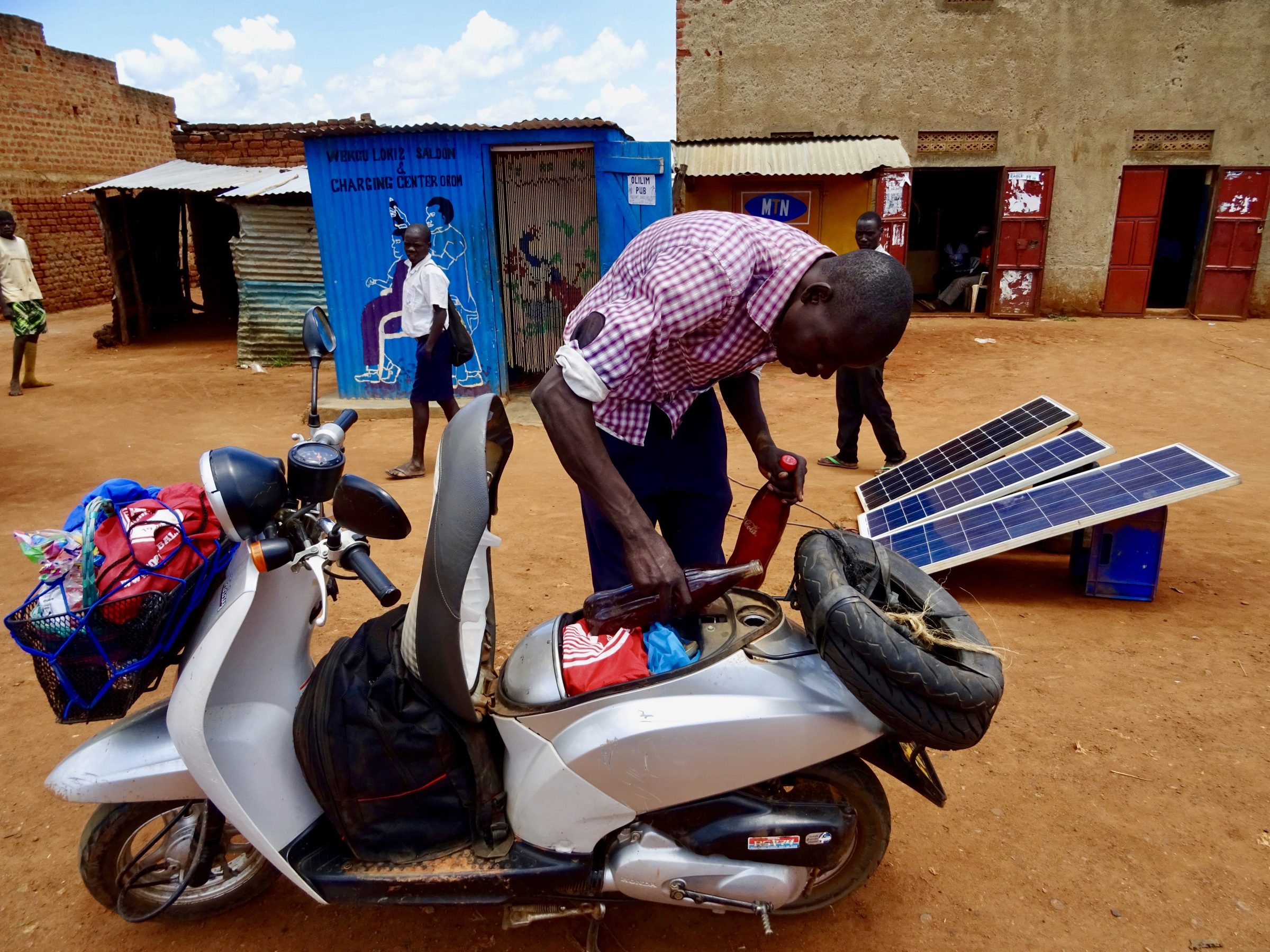
I take a moment to admire the shops of the local middle class. That's how I meet the hairdresser in a KLM blue wooden loft. It's drawn on it while working on a customer with clippers. His hair salon also serves as a charging station for mobile phones. The electricity for this comes from three solar panels.
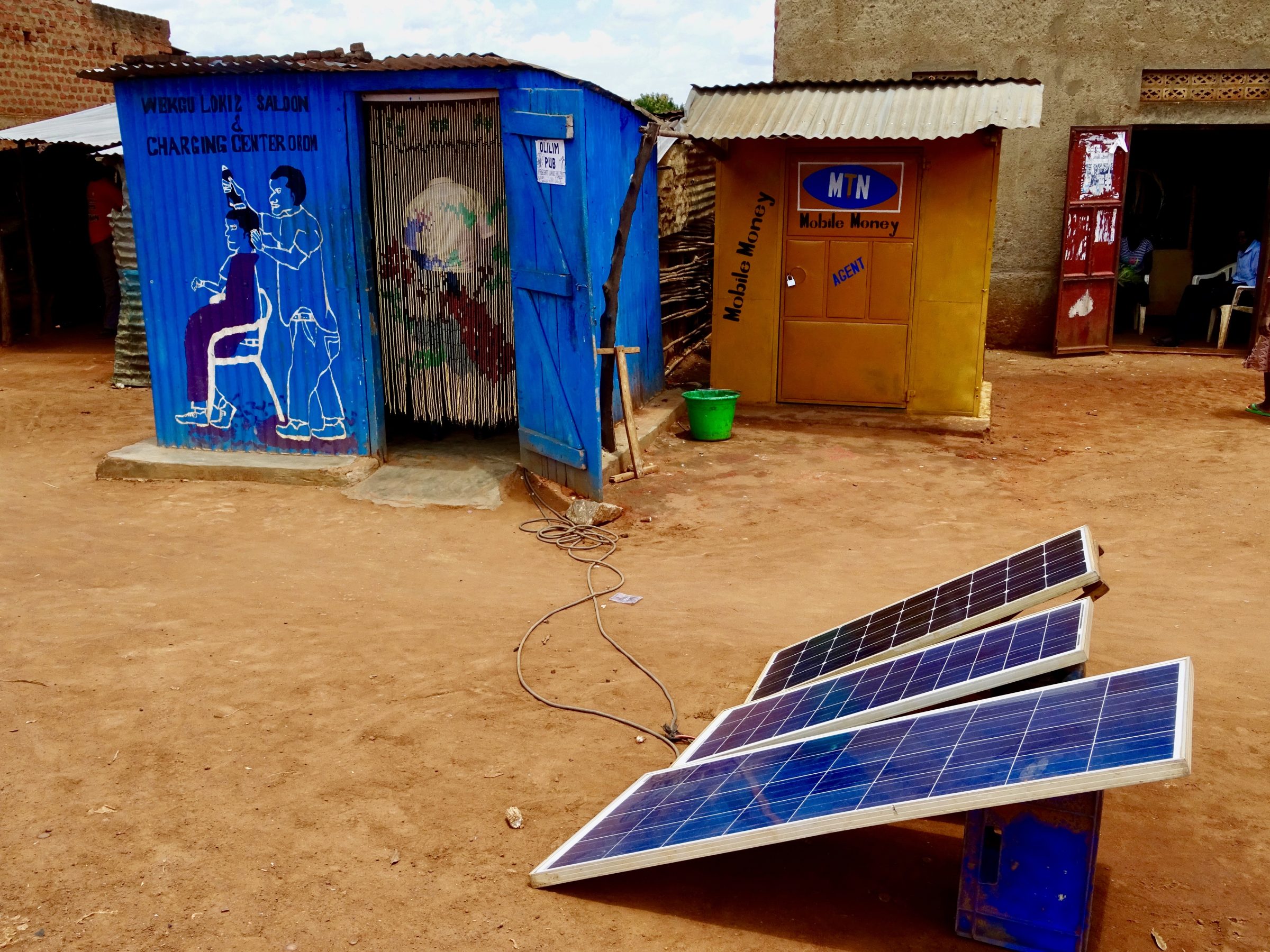
For meat I have to go to a corrugated iron hutch painted blue-red. "YES, CUSTOMER THIS IS JERUSALEM 3 CORNER BUTCHER OROM."
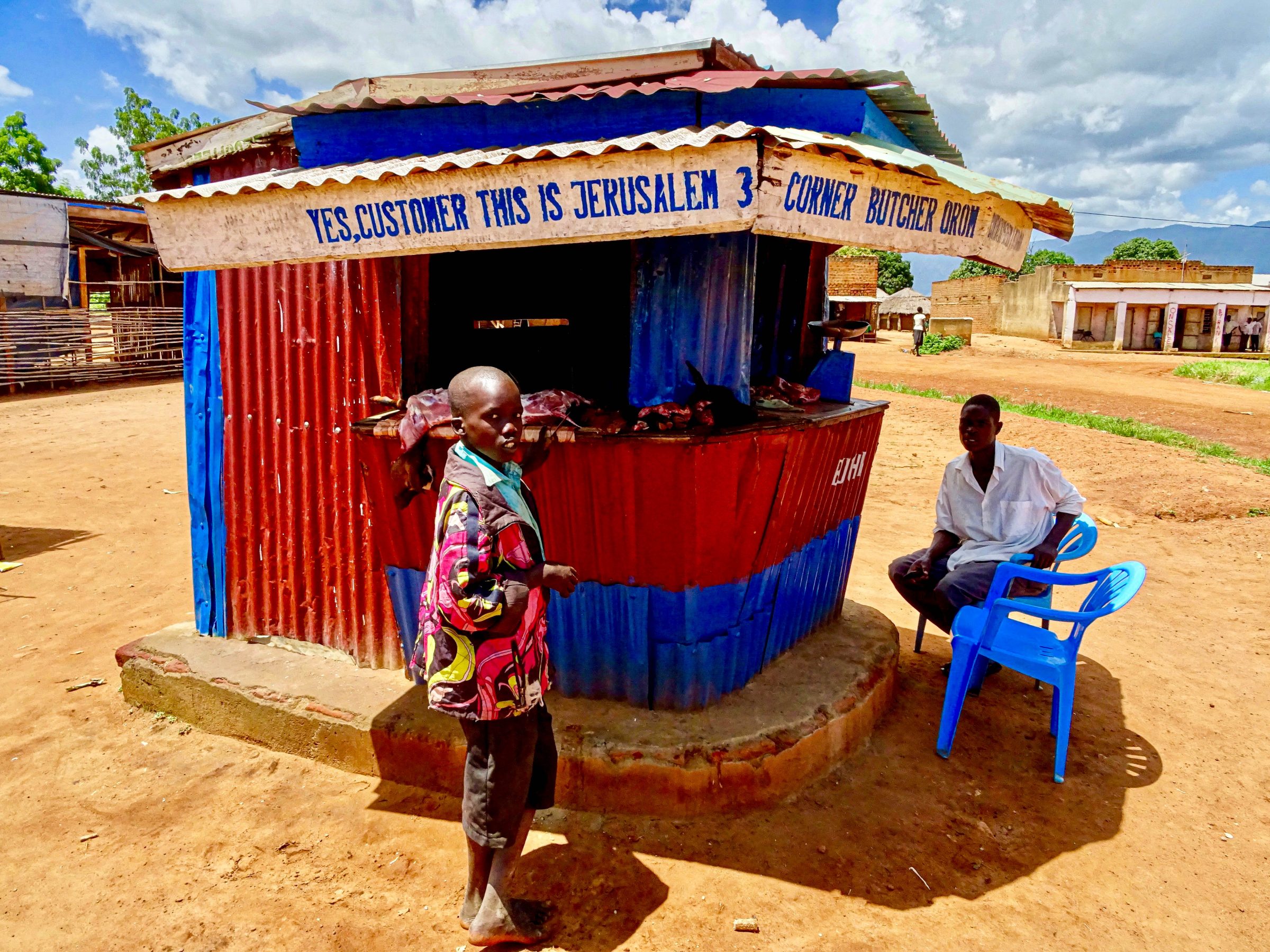
The sun continues to do its utmost. I'm lucky with that, because I really can't use rain on these roads. In no man's land I am once again applauded. This time by five guys. They're lucky, because today I'm treating everyone to a delicious tomtom.
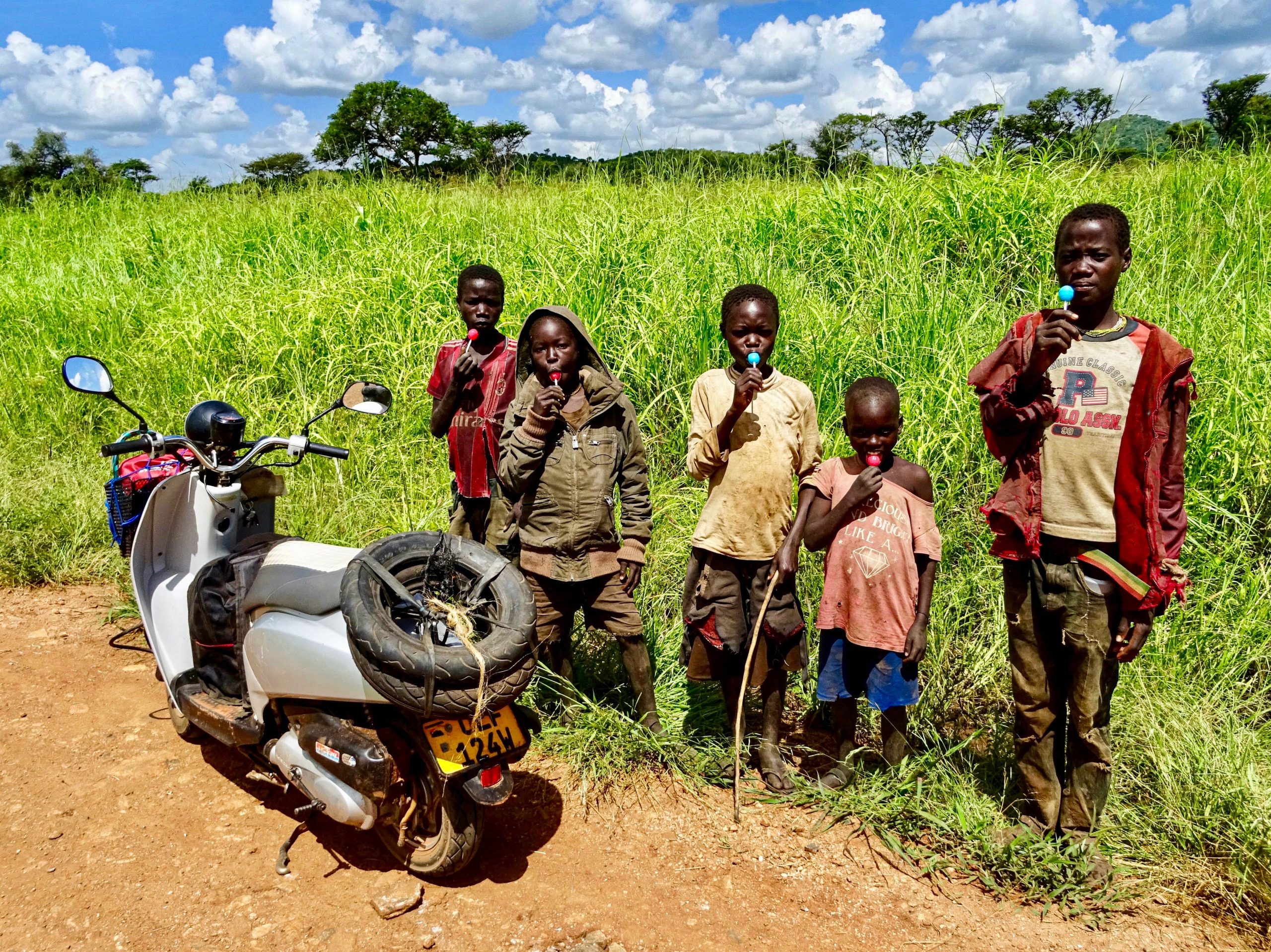
It is almost half past four and time for the rush hour. Traffic on the so quiet road suddenly increases significantly. Two goat herders lead their flock home.
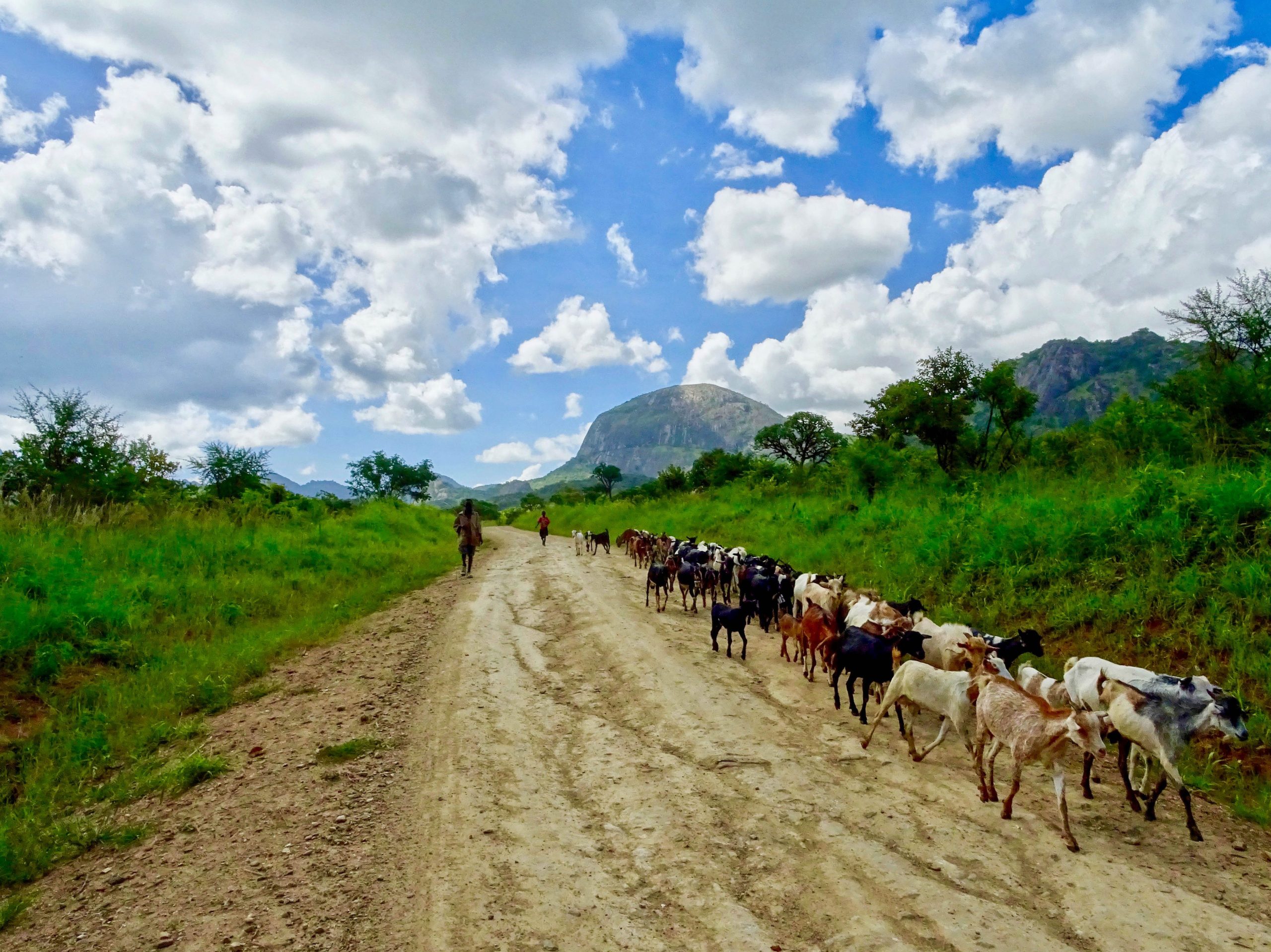
Barely five minutes later, a herd of goats blocks the entire way.
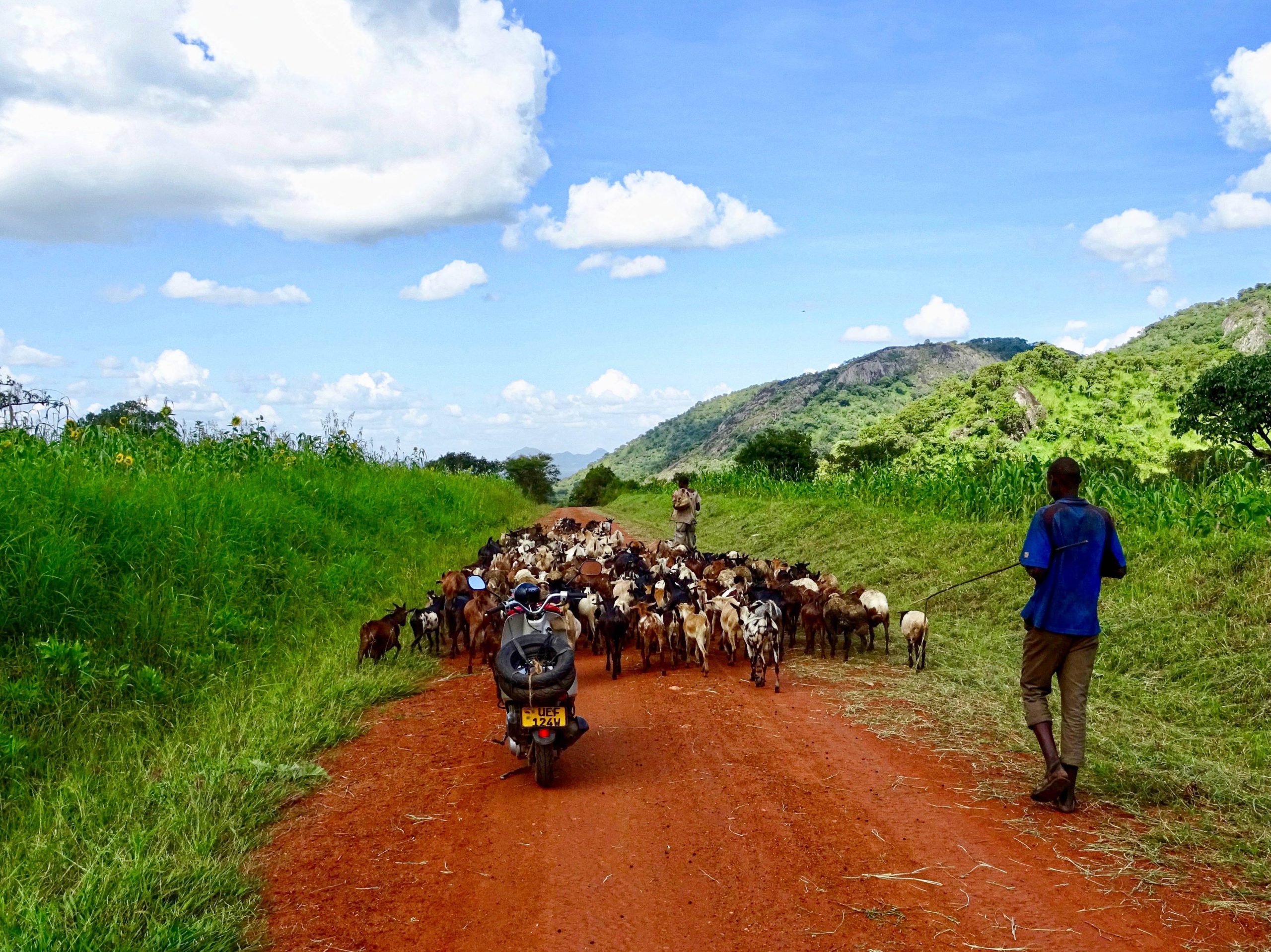
The tiredness starts to play tricks on me around five o'clock. My legs are made of wood and my fingers are shaking from the many times I have had to accelerate and brake. Fortunately, the gate to Kidepo is near. Another 22 kilometers I read on a signpost. A couple of women walk in front of me with buckets on their heads. They are apparently on their way home.
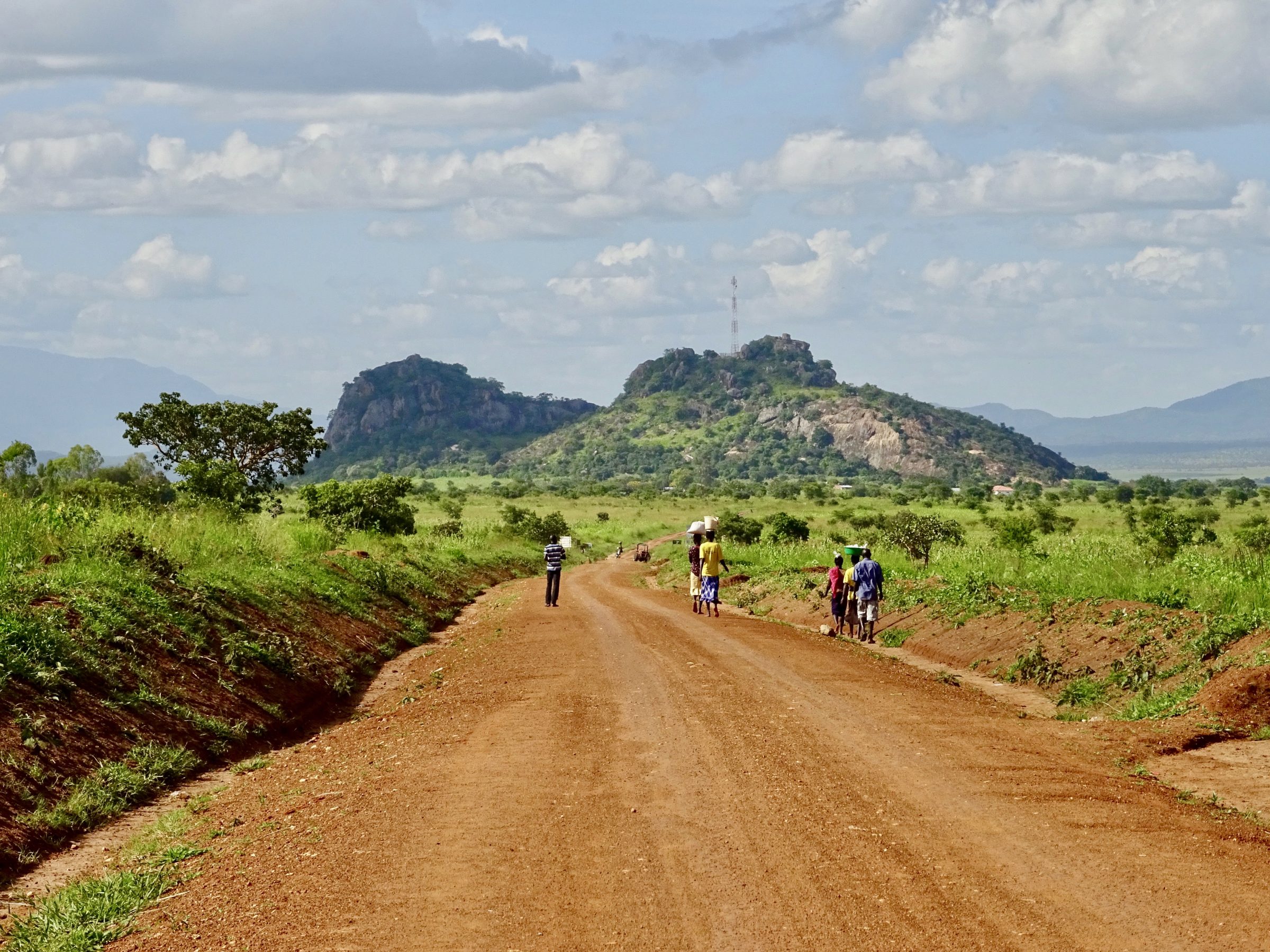
And then it's time. At ten to six I stand in front of the entrance gate to Kidepo Valley National Park. The park ranger writes out a permit and reports that it is forbidden to go on safari in the park on my scooter. I nod as a sign that I will abide by this prohibition.
The Apoka camp is located more than twenty kilometers in the park. It seems clear to me that I will drive there on a scooter. But according to the park ranger, that is not a safari. Only when I deviate from the main road can there be talk of a safari. 'We sometimes have boda boda drivers here who take a passenger to Apoka on their motorcycle. They are allowed to drive to Apoka, but they are not allowed to drive the passenger around the park for a safari. That's the big difference!'
I totally get it, but I don't understand it. It's Ugandan logic, which I like, by the way. Because how else do I get to the camp?
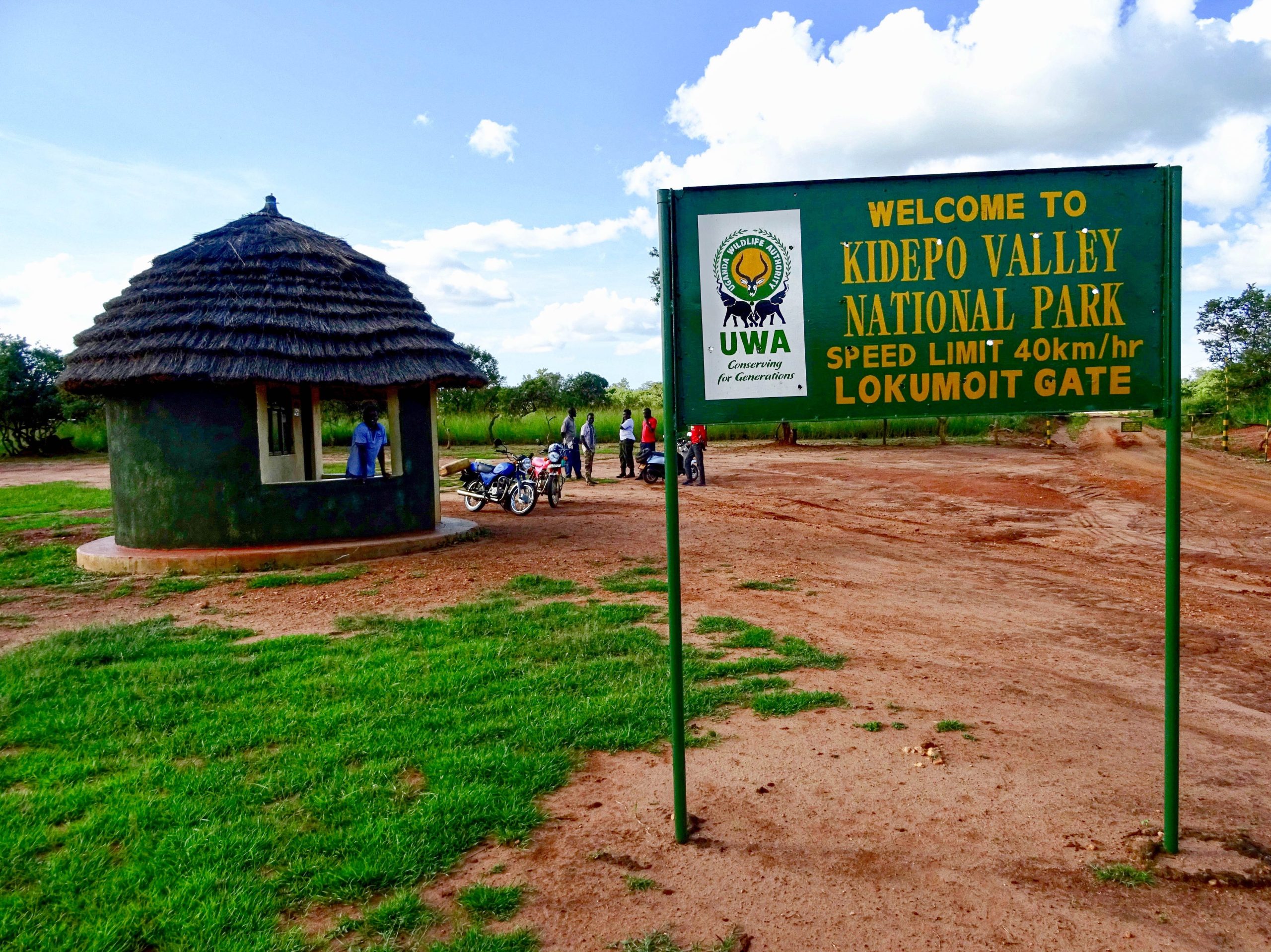
I have not yet passed the barrier before the first topper runs for my scooter. It's a hussar monkey. Yes, that monkey with sunglasses. He turns out to be in the company of a contractor named Alfred. We take a picture together. Alfred immediately invites me to visit him tomorrow. He is working on the completion of a luxury lodge, which is located on a mountain.
'The lodge was owned by the government of Idi Amin. Sometime in the 1970s they started building it. However, when Idi Amin was ousted in 1979, construction was halted. Now we are almost done with its completion. Come and have a look tomorrow, because the view of the Kidepo Valley is simply breathtaking.'
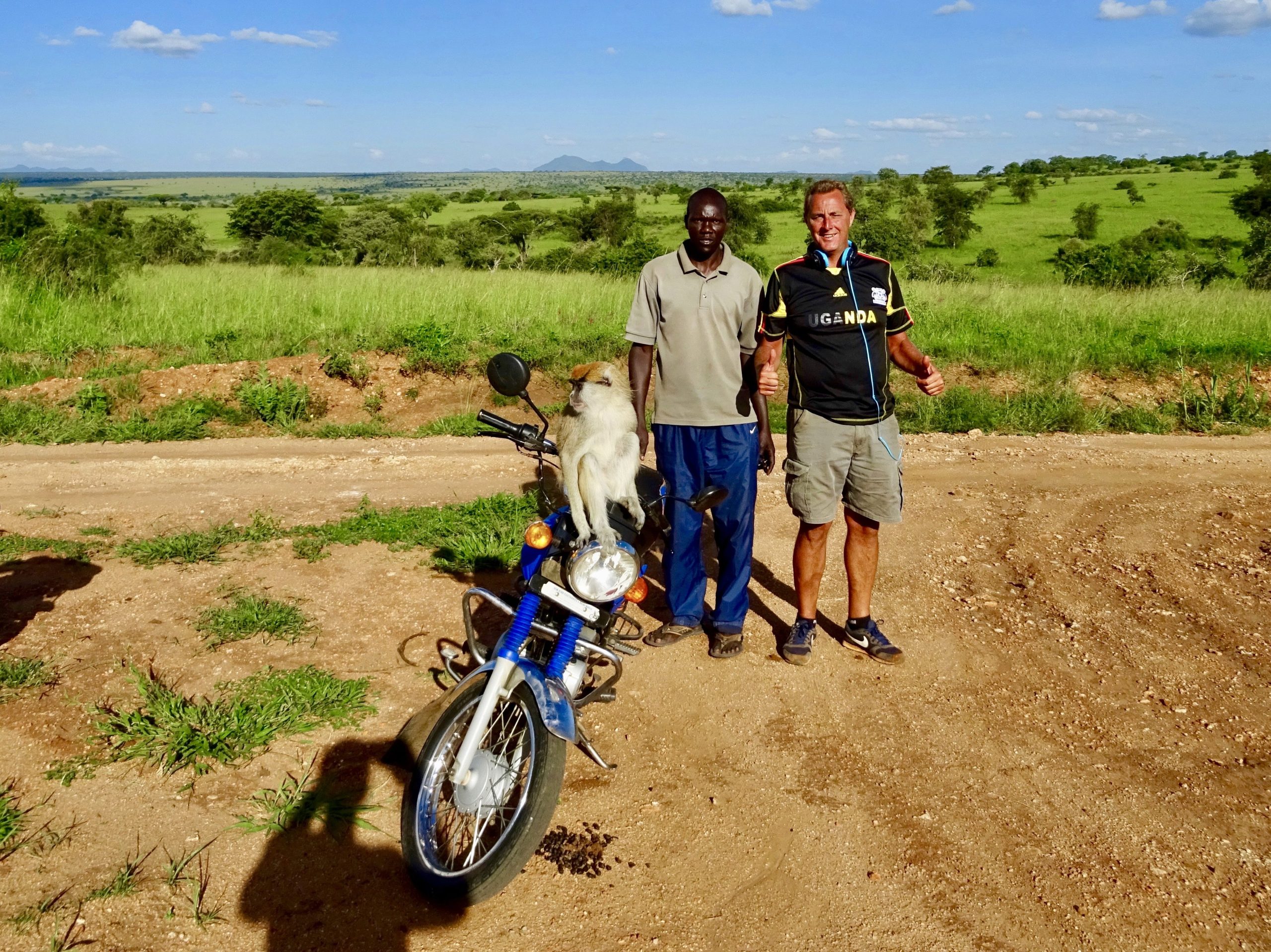
And why no safari? 22 km is the distance to the Apoka camp. In those 22 km I see herds of elephants and buffalo. The moped makes an appearance and many more animals from this distant animal forest! That bodes well for the next few days…
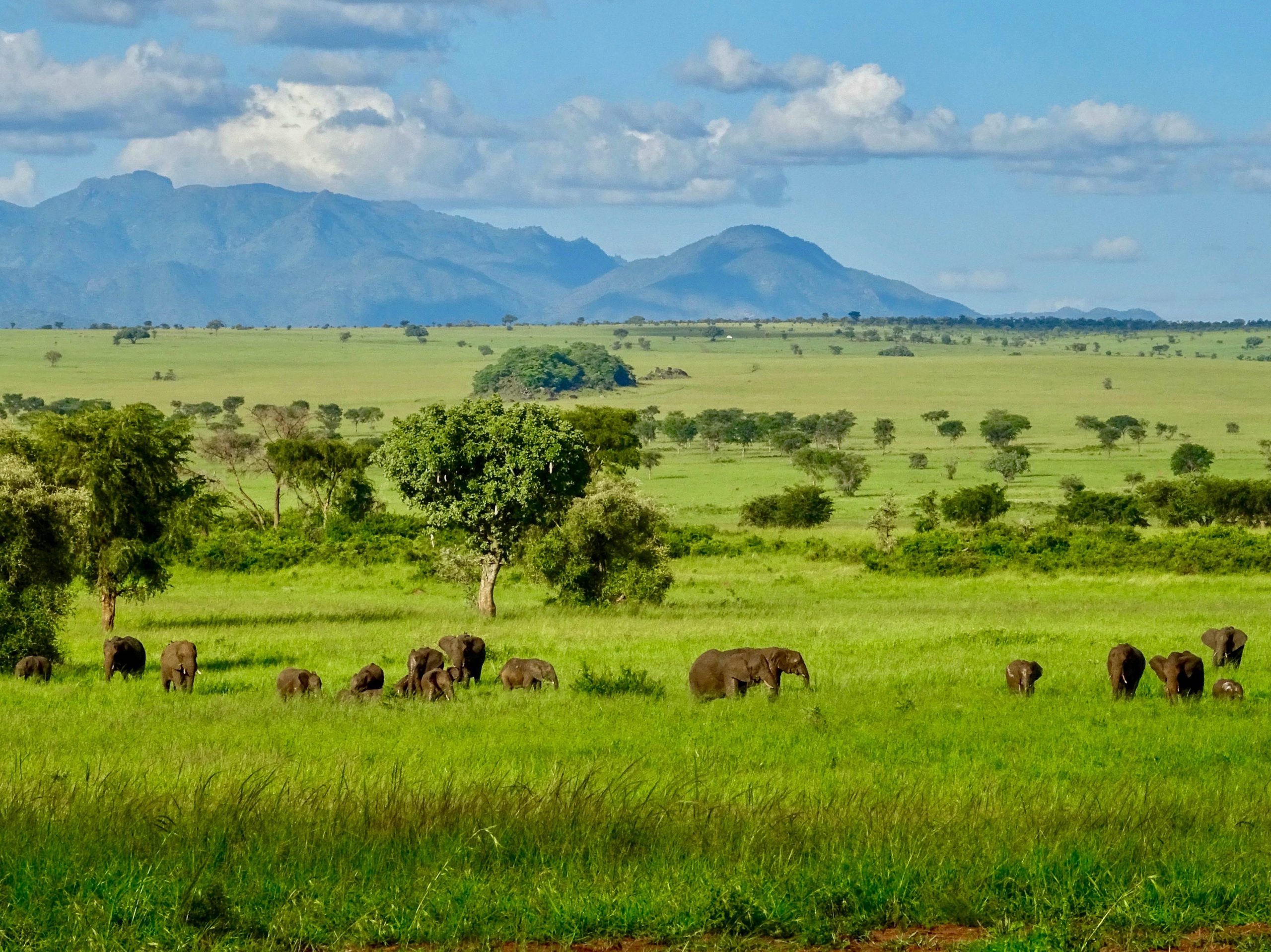

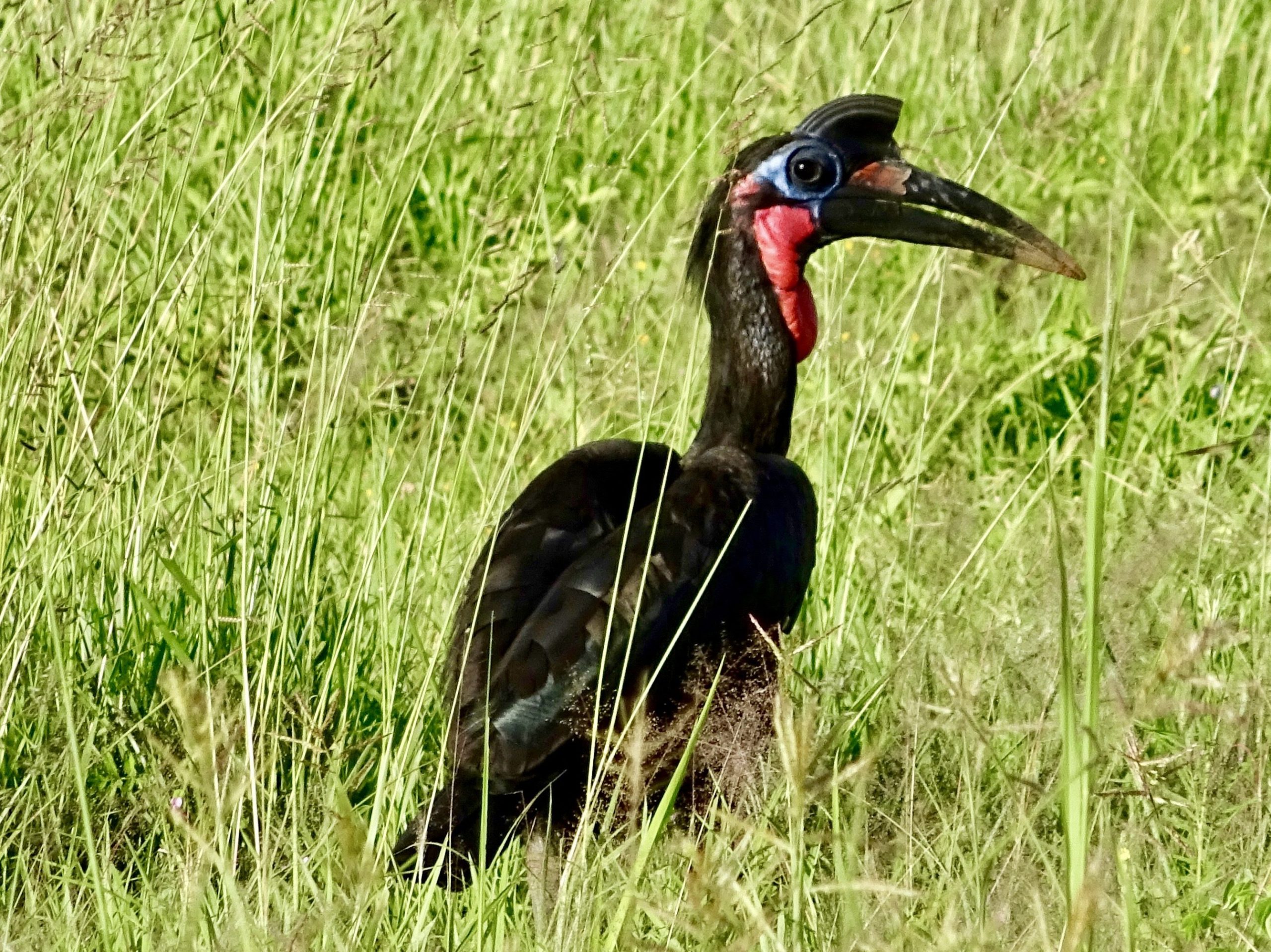
Reach the camp at half past seven. A number of children are playing a game of football on a football field. Manager Betty greets me most warmly. She frowns at the sight of my scooter. "Did someone at the entrance tell you not to go on safari?" she asks. 'Yes, of course. I am aware of that.'
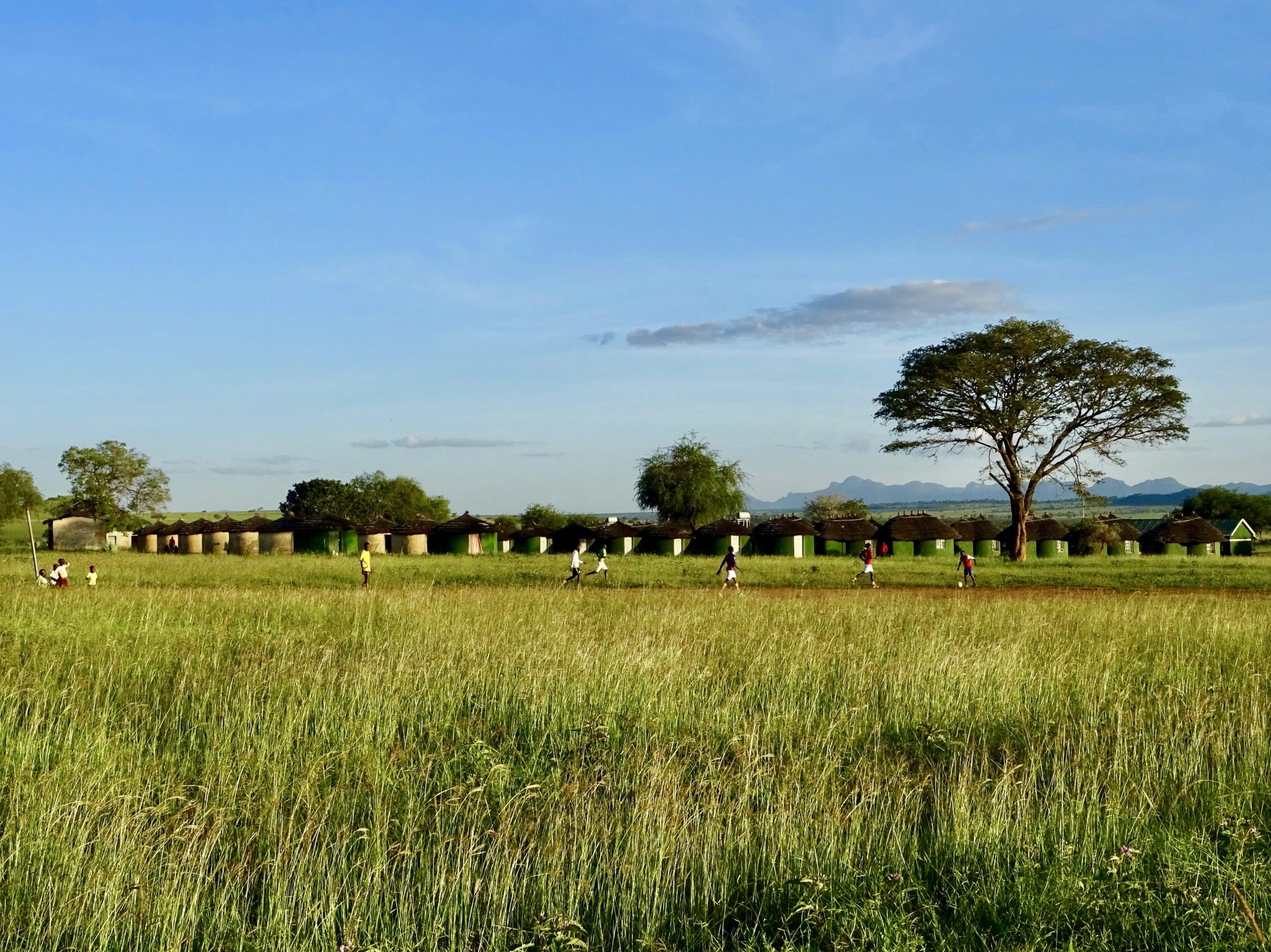
Then it's high time for dinner and some cool stories around the campfire.
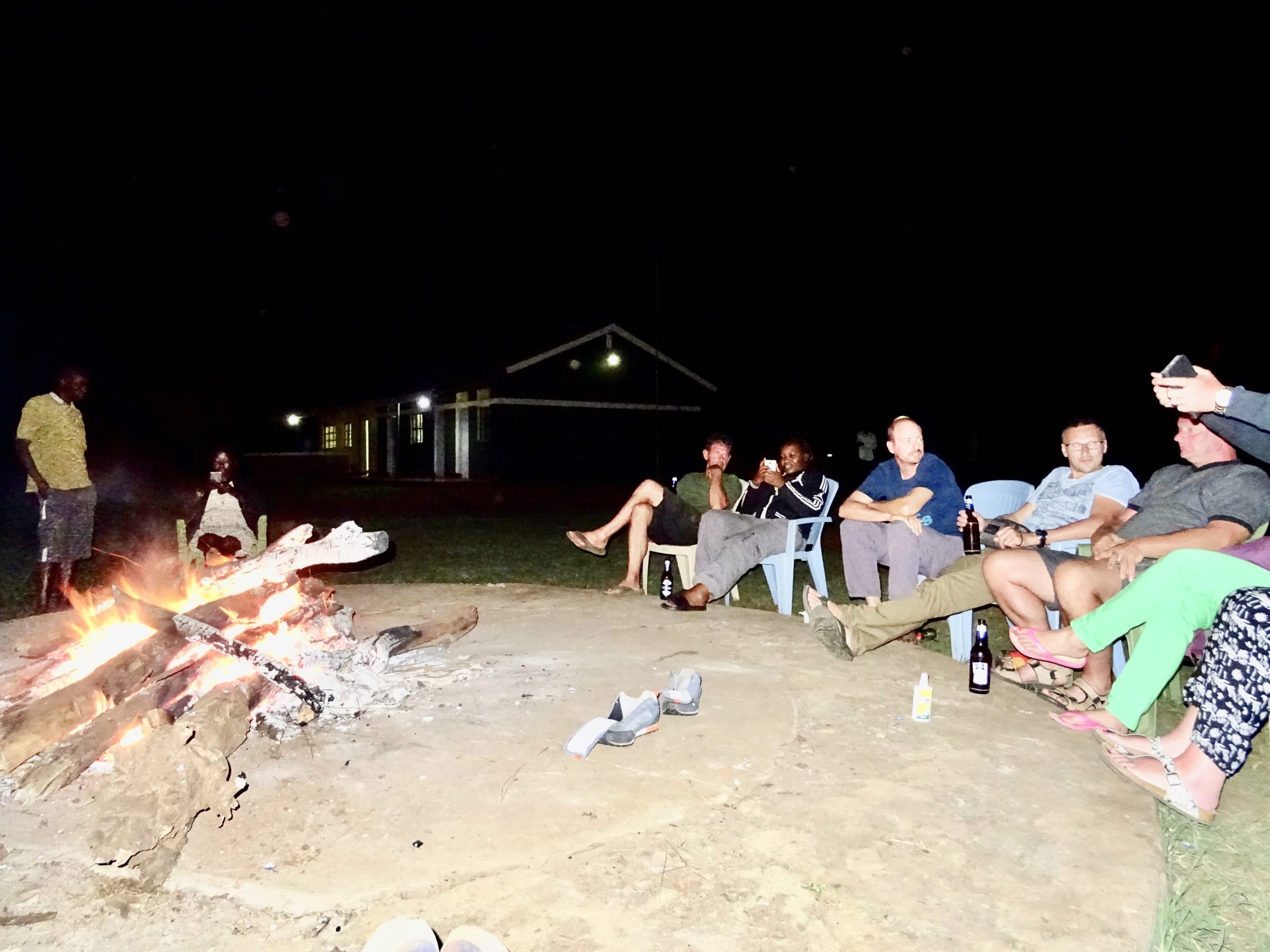
My experiences in Kidepo Valley National Park
The rest of the blog is about my own experiences in Kidepo Valley National Park. For a lot of general information and interesting facts about this fantastic park, I refer you to the blog that I will write about Kidepo soon. This following two visits to the park in 2017 and 2018.

So keep an eye on this website.
Click here for the Uganda Wildlife Authority's Kidepo Valley National Park website.
A national park in a conflict zone on the border with South Sudan
The isolated location of Kidepo Valley National Park in northern Uganda offers tourists a unique wildlife experience. Kidepo is home to an enormous diversity of flora and fauna. In addition to lions, elephants and giraffes, large herds of buffalo and elephants live in the park. The panoramas over the vast plain are simply breathtaking.
About half of the nature reserve is located across the border in South Sudan. There are also the mountains that can be seen in many photos. Unfortunately, the Kidepo Game Reserve in South Sudan is closed. The civil war in South Sudan has been raging in this area for some time.
During my stay in 2018, a truck with an open bed arrived every other day at the camp in Apoka. The body was filled to the brim with about 60 refugees from South Sudan. The camp offered the refugees shelter for the night. The next morning the journey was resumed towards refugee camps in the Kitgum area.
Lots of game in and around Apoke rest camp
Actually, you don't have to go on safari at all to see game in Kidepo. In the two days that I stayed there, a lot of game just came to report to the camp. I myself saw hussar monkeys, jackals, buffalo, impala, elephants, warthogs and many birds.
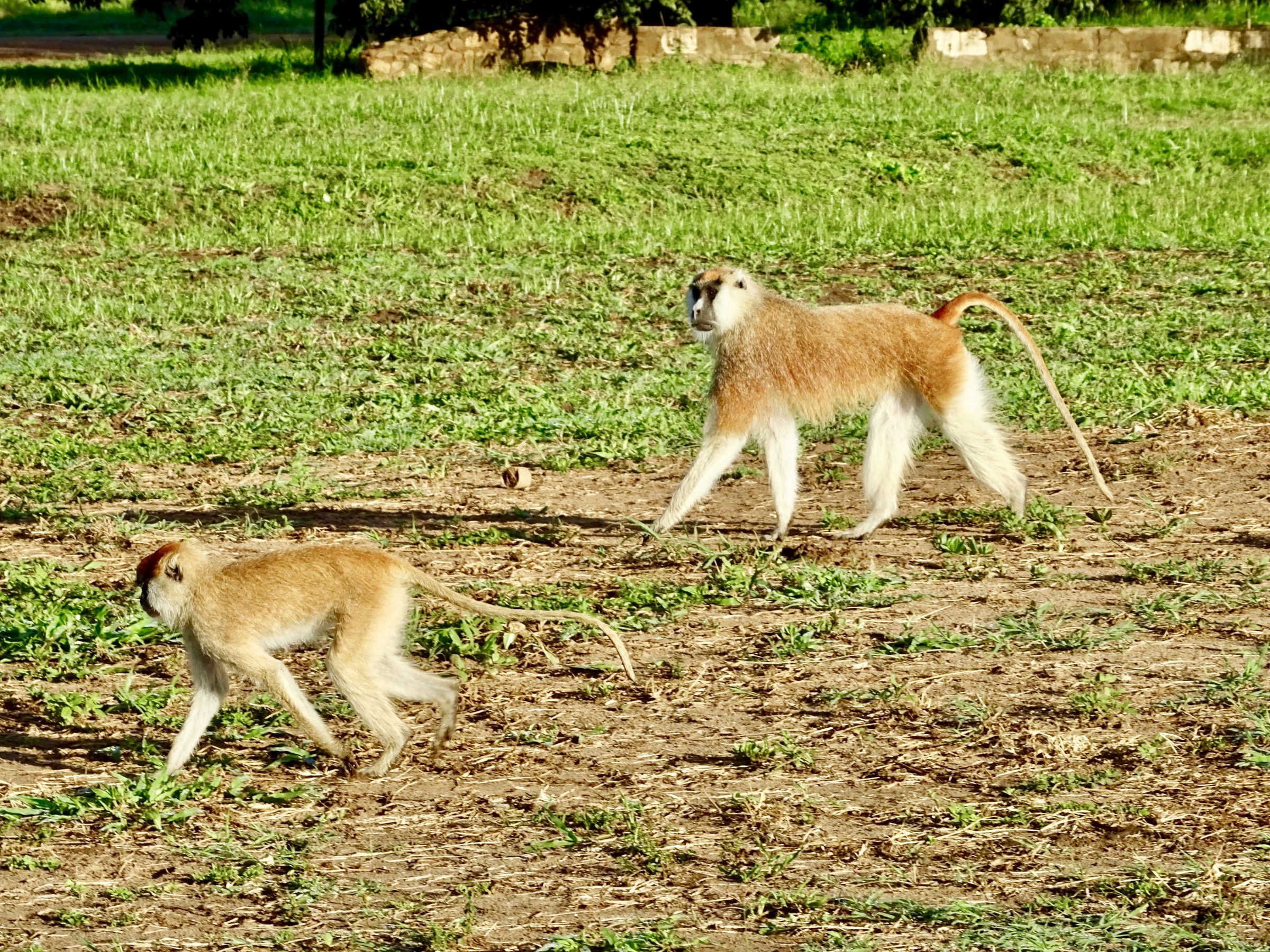
A British wildlife photographer told me that in and around the camp he managed to capture almost all the game species in Kidepo within a few weeks. He showed me beautiful pictures of wild dogs, spotted hyenas and cheetahs. "Not a single tourist got to see it on safari."
According to him, you might as well sit or walk around the camp's viewing platform all day. 'Most tourists simply don't have the patience to wait quietly. They think they have a much better chance of seeing game during a safari. And they paid for it.'
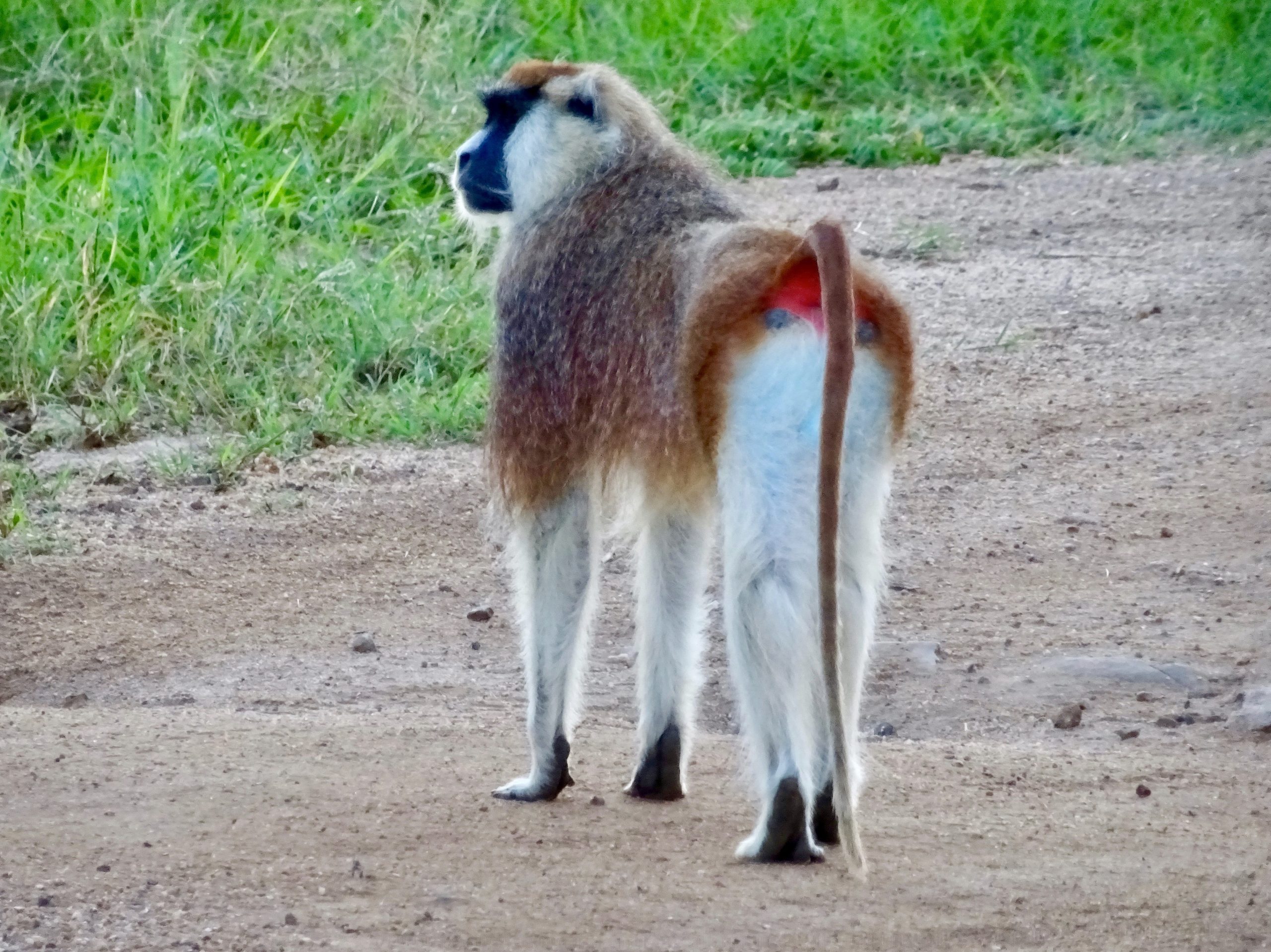
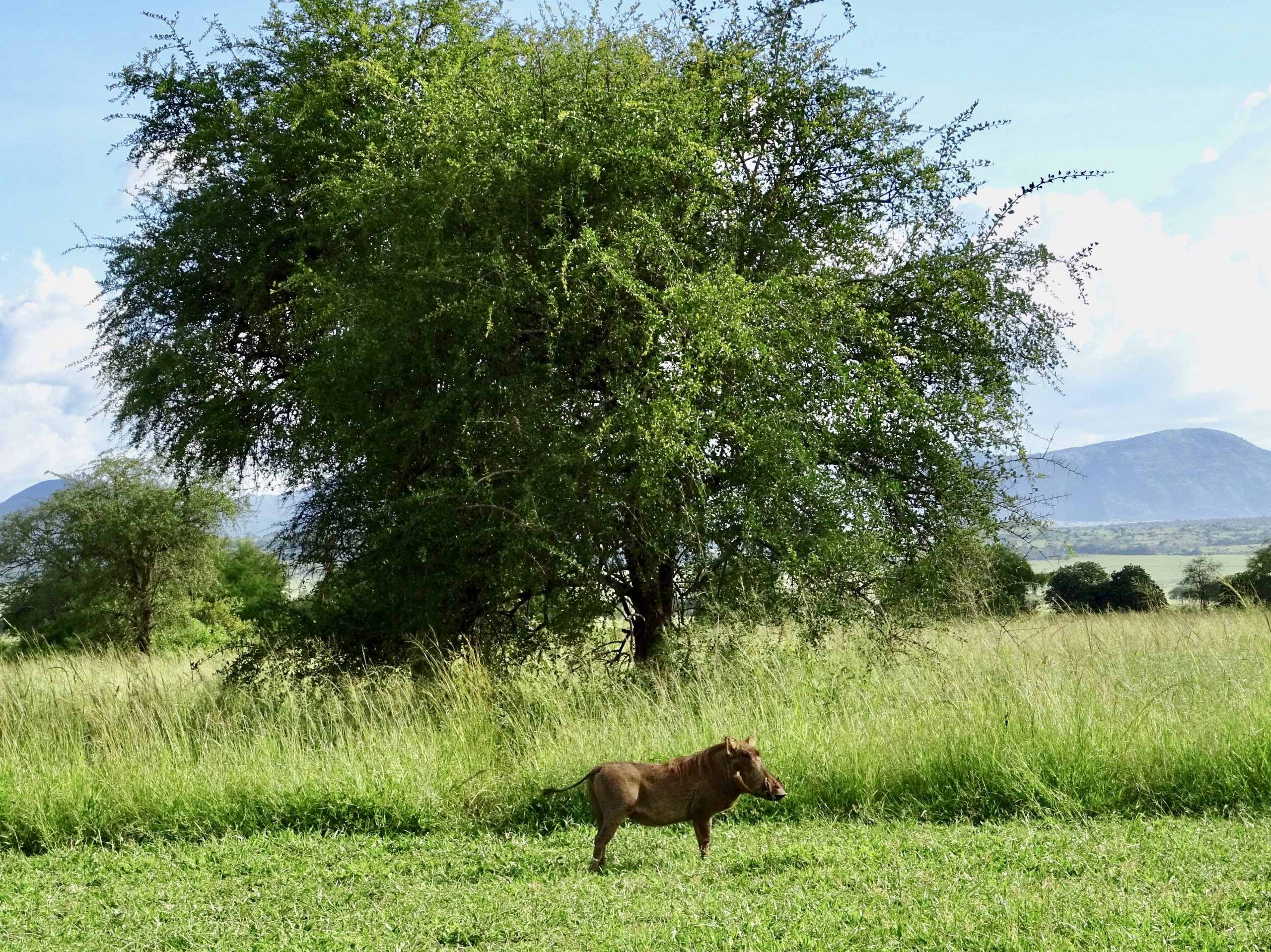
Idi Amin's private lodge in Kidepo
In the 1970s, Kidepo National Park was the private hunting ground of dictator Idi Amin. He welcomed many international guests and went hunting there regularly. In 1971 Idi Amin chose the Katurum rocks as the location for the construction of his private lodge. From those rocks, the view of the Kidepo valley is simply breathtaking.
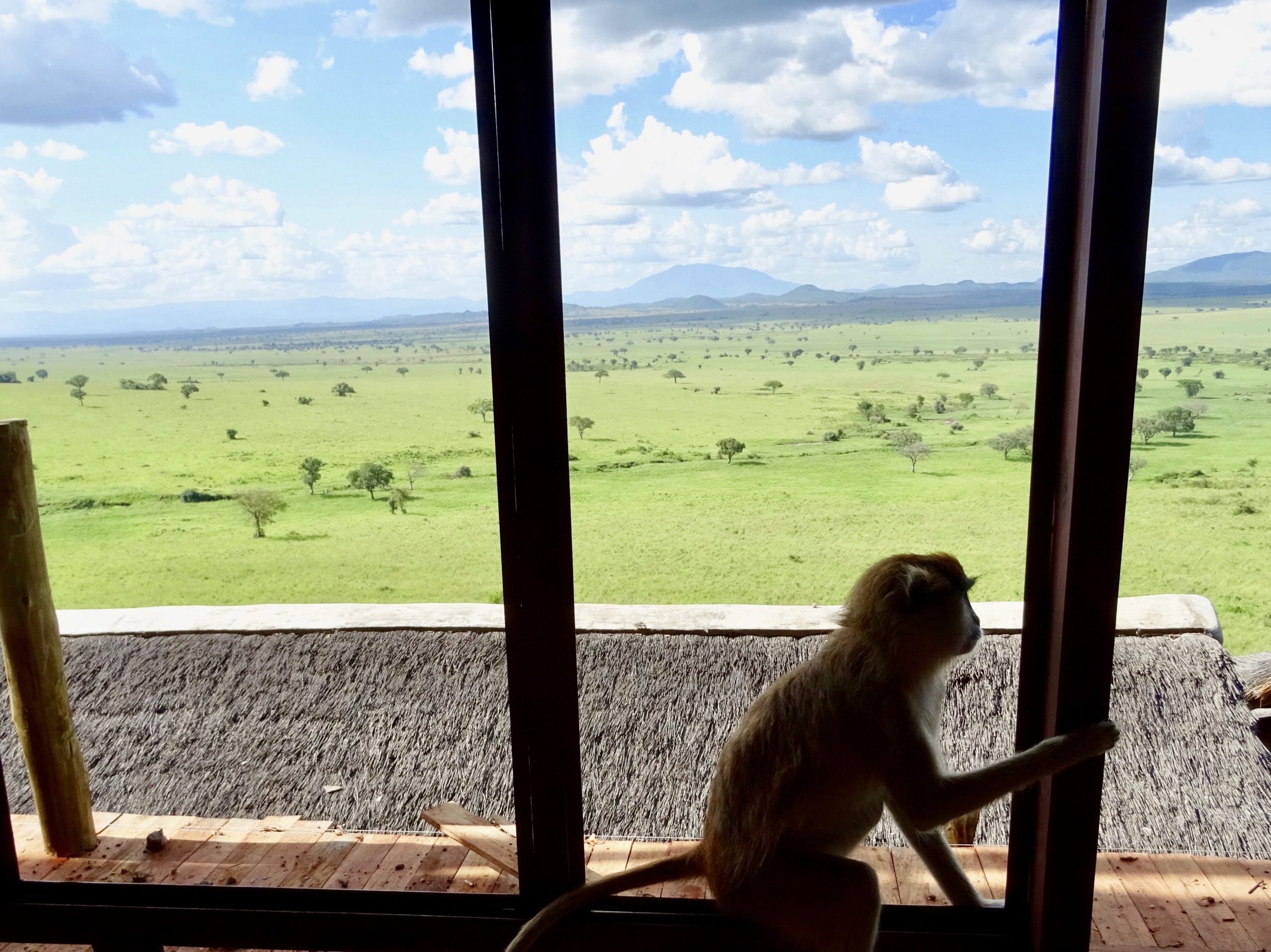
In 1979 the dictatorship of Idi Amin came to an end. It is said that construction of the lodge had not yet been completed. The highly controversial lodge was left entirely to the whims of Mother Nature over the next 35 years. In 2014, the government of President Museveni took the decision to raze the lodge. A local businessman managed to change the president's mind. He submitted a plan to revive the lodge. Museveni eventually gave permission to build the Katurum Lodge.
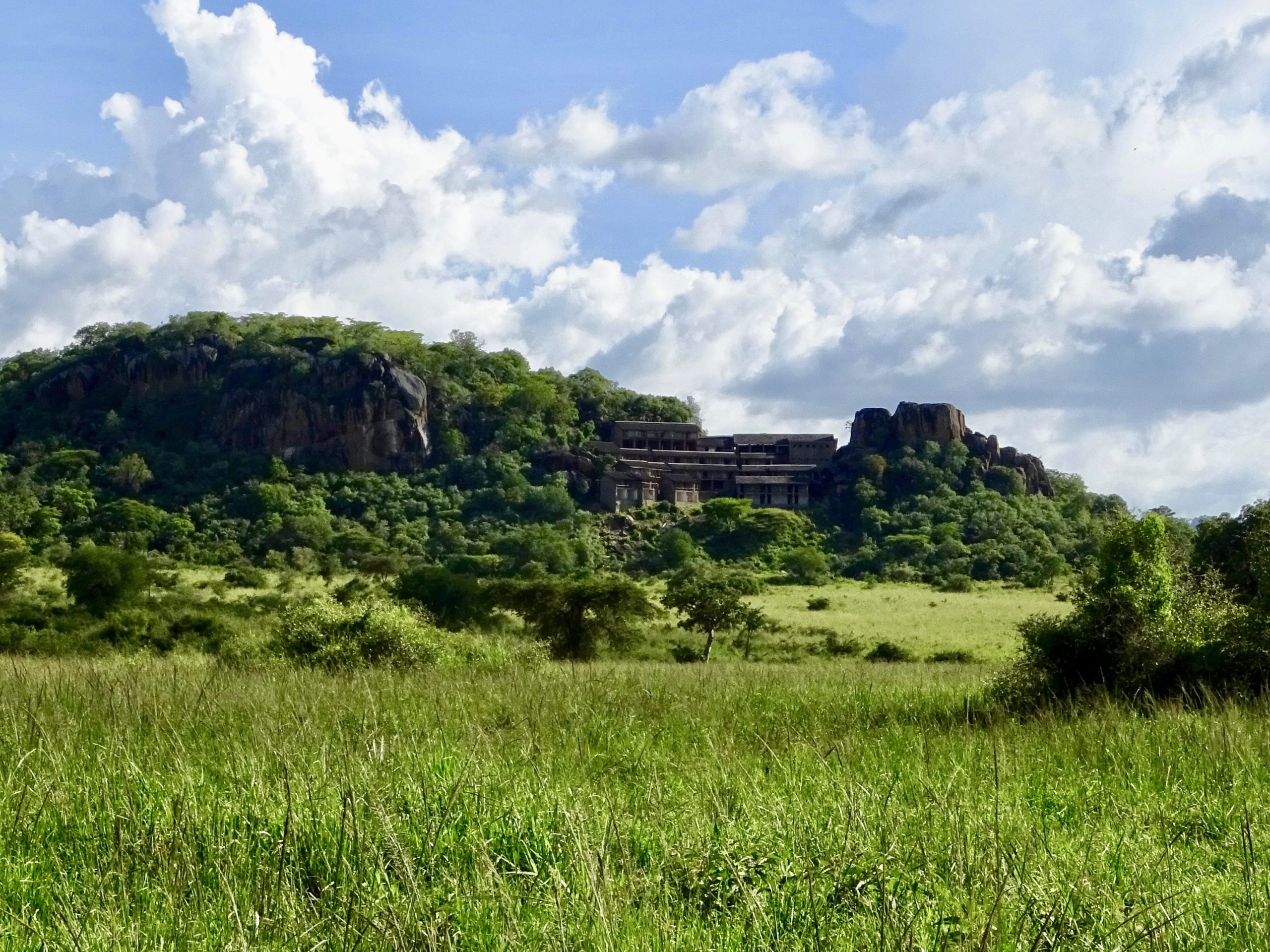
In August 2017, I noted that much progress had been made. Together with Alfred, who invited me for a visit the day before, I walk around the complex. In the meantime the Russian monkey steals a lollipop from my pocket and eats it. Alfred and I then enjoy the unbelievably beautiful view from the nearly completed penthouse. wow!
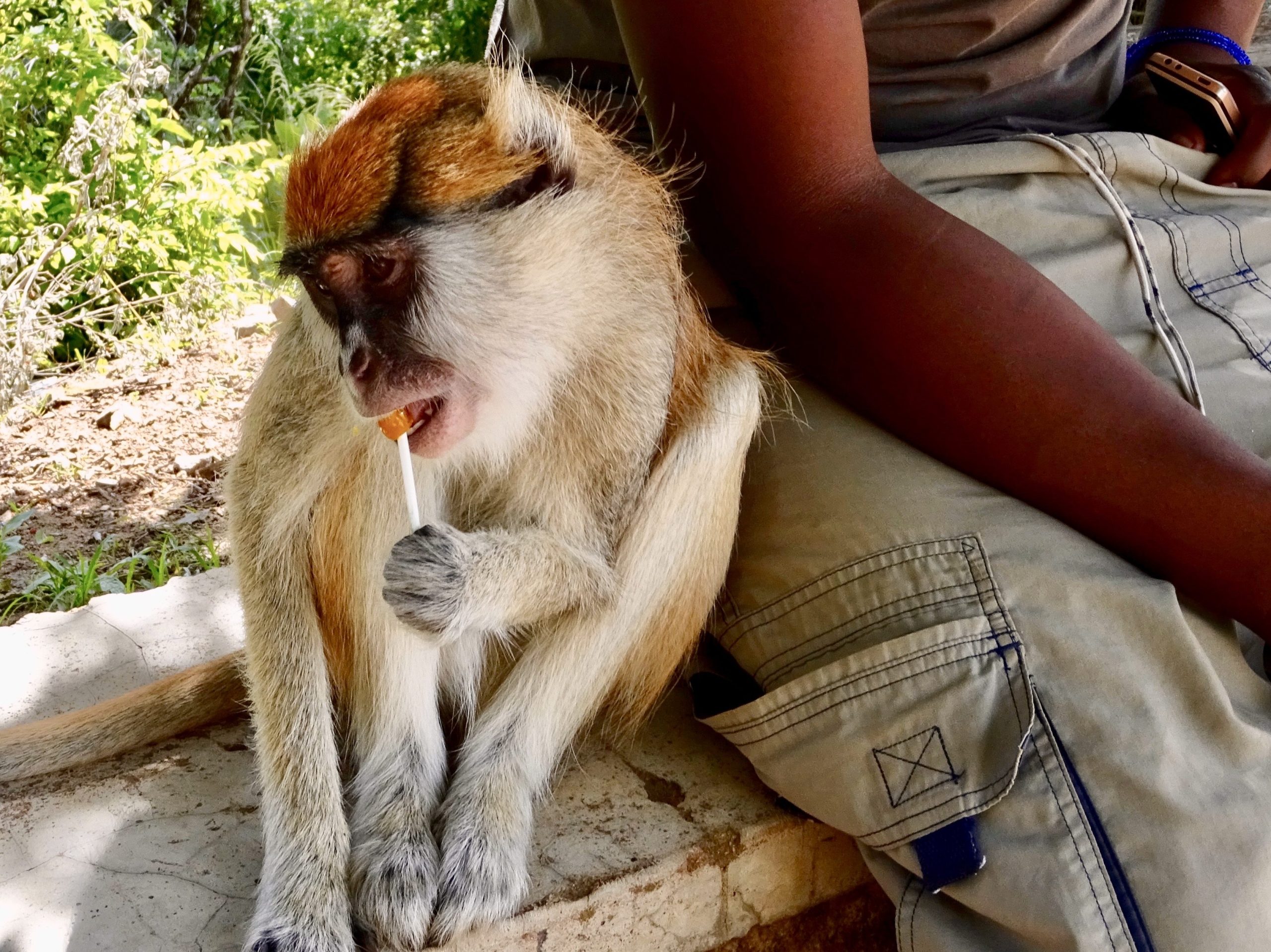
Postscript: The Katurum Lodge is now called Adere Lodge. Click here for the Adere Lodge website.
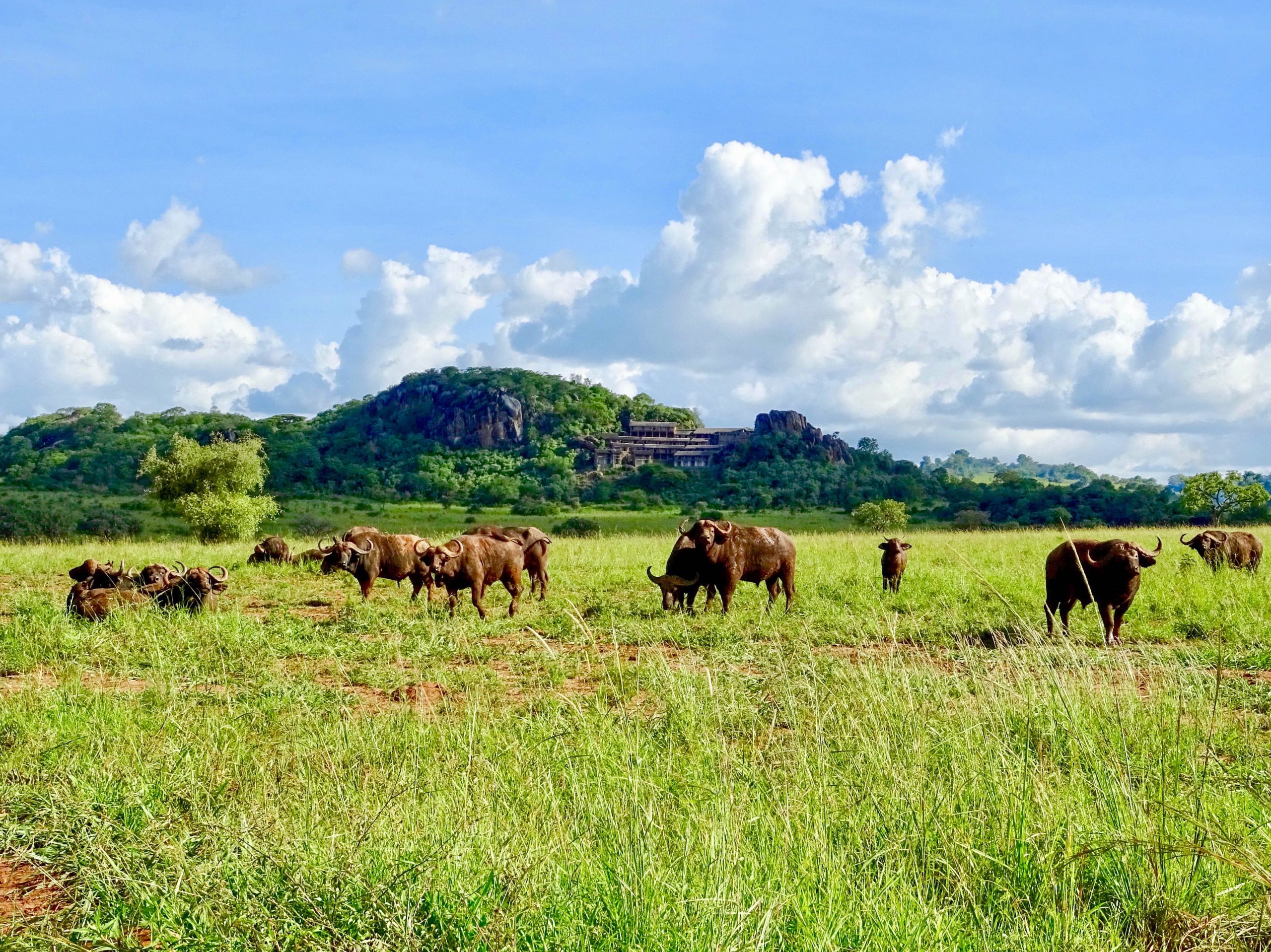
Uganda has stolen our hearts more than once and as far as we are concerned it is a travel destination that belongs on the bucket list of every world traveler. Find out why Uganda is called the pearl of Africa.
A trip through Uganda will be one you will never forget. Spot the tree-climbing lions, meet thousands of elephants, come face to face with Mountain Gorillas in the jungle and get to know the beautiful culture.
Plan your holiday to Africa here
- Itineraries you can compare + request quotes Africaplus, Africa tailor-made, Djoser, king monkey, rickshaw travel, sawadee en shoestring.
- Flight tickets for Africa you book through Skyscanner.
- Hostels, Hotels and Resorts in Africa you book Booking.com.
- Rental cars : Sunnycars en rental cars.
- Tours and Activities in Africa you book through GetYourGuide.
- travel items such as suitcases, bags and more you can buy at Bol.com.
- SIM cards for Africa you buy extra International sim.
- Parking at the airport you can arrange via Parkos, park care of iParking.


